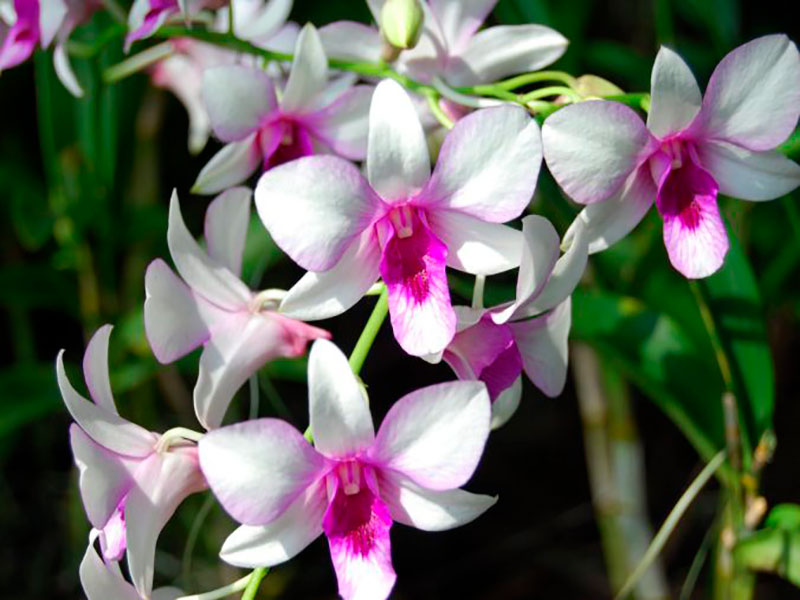Magazine all about Amazon Rainforest
Amazon, the largest and most exuberant rainforest on the planet
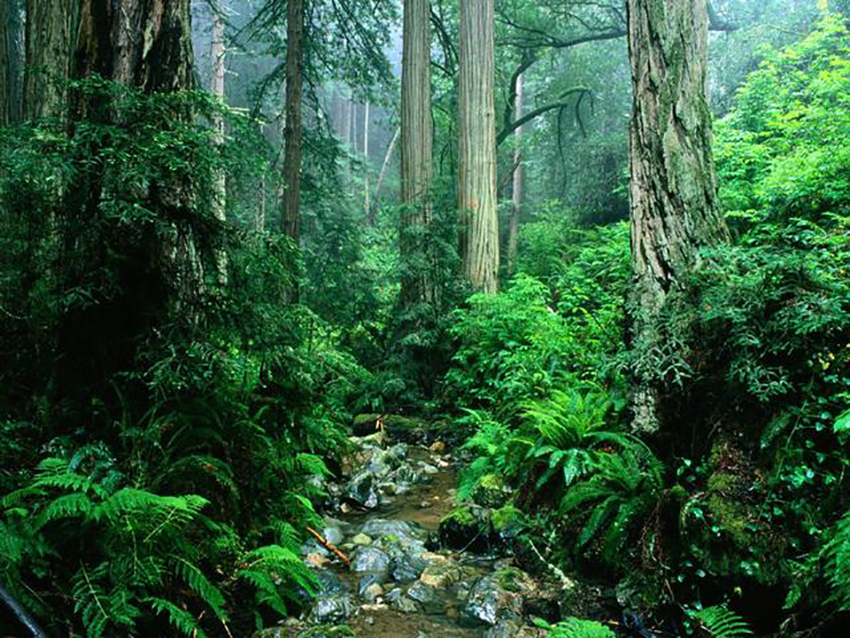
Source: Tumblr.com
The Amazon River and its thousand tributaries make up the largest and most powerful watershed on the planet. Thanks to this enormous expanse of Waters and wetlands, the Amazon rainforest, called the lung of the world, was developed over millions of years. This wonderful system is rich in biodiversity, with tens of thousands of lives of all shapes, sizes, colors and possible locomotions. Hundreds of millions of trees and other plants absorb water and then return it to the atmosphere in immense quantities of water vapor, a mega transpiration that forms the clouds, from which the vital liquid returns by passing drizzles or prolonged downpours, which partly they rush over the forest itself, with which their forests maintain a constant humidity, although they also irrigate distant places such as the Andean mountain range and the Argentine pampas. This gigantic biochemical machinery gives us an idea of its importance and explains why it is called the “lung of the world”, at the same time that it worries that it could disappear in less than half a century, as many scientists affirm.

The Amazon in 5 minutes
The Amazon and the extraction of CO2 from atmosphere
Trees produce oxygen, a vital element for most species, and in turn absorb carbon dioxide (CO2) the largest component of greenhouse gases, causing global warming and its consequence climate change. During photosynthesis, the process carried out by trees and a large part of plants, they absorb and
store CO2, which is fixed to their roots, trunks and leaves in the form of carbon. The plants, although they take oxygen from the air and re-enter CO2, the final balance is positive in favor of the extraction of CO2 from the atmosphere. The absorption capacity is proportional to the size, density and quantity of plants and trees present in a forest.
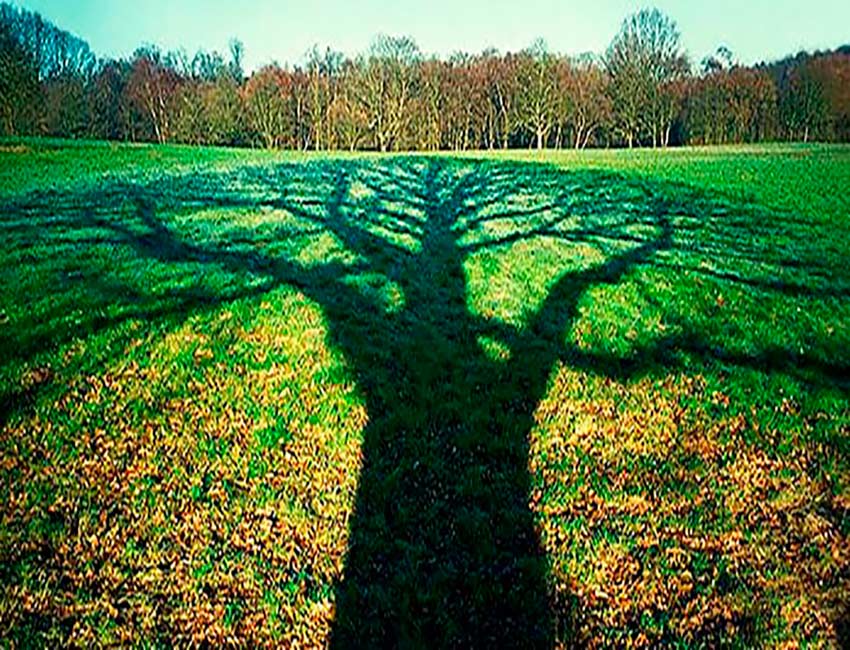
9 countries share the largest forest on the planet
By order of territorial size – Brazil owns 60% of the total of the Amazon
1. Brasil
2. Perú
3. Colombia
4. Venezuela
5. Bolivia
6. Ecuador
7. Guyana
8. Surinam
9. Guayana Francesa
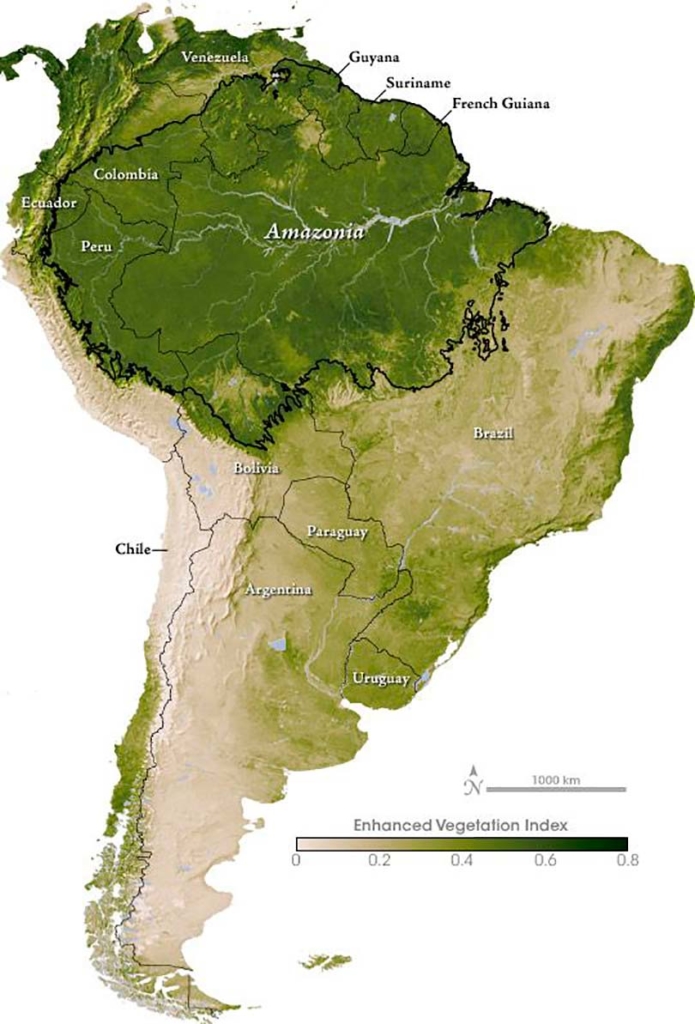
Soursce: Pinterest.com
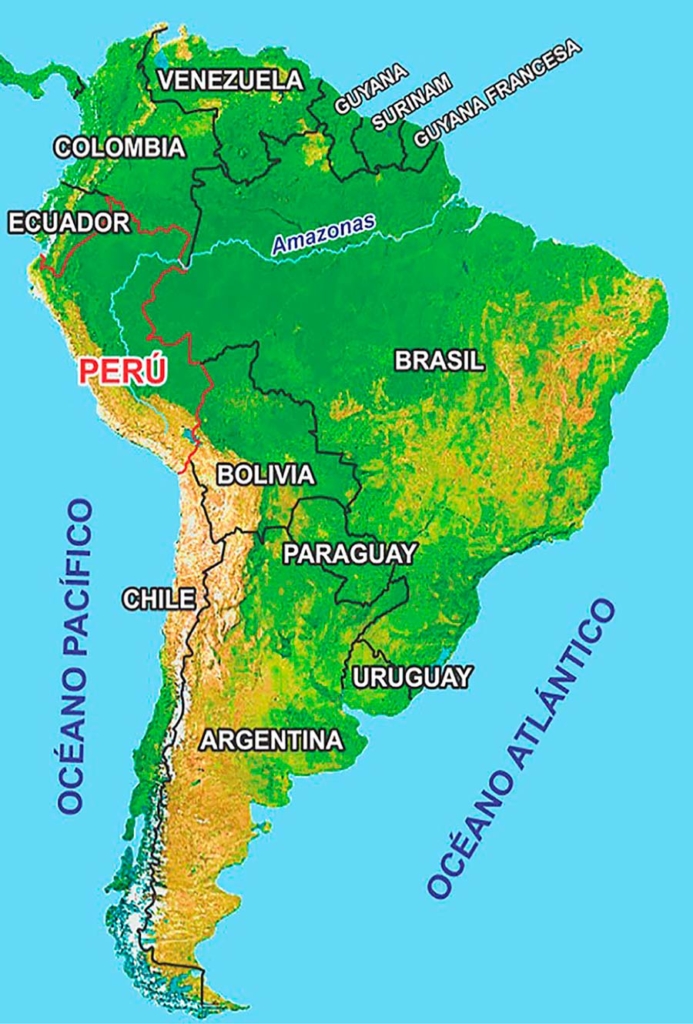
Source: Peruinformation.org
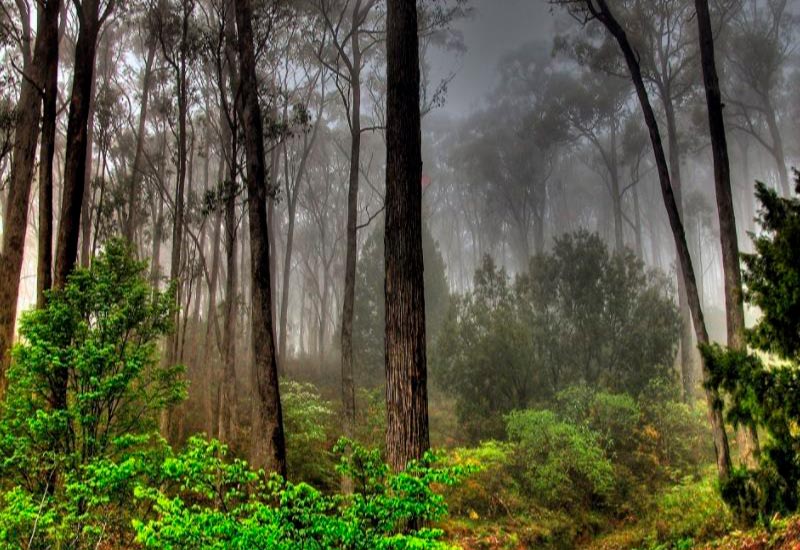
Source: Planetacurioso.com
The Rainforest in numbers
Nearly 7 million km2
12 times the size of Spain
80 thousand kinds of trees
140 thousand species of plants
20% of the world’s species
Amazon the longest river in the world
It has about 20% of the world’s fresh water
The Amazon delta is 240 km wide
Destruction in figures
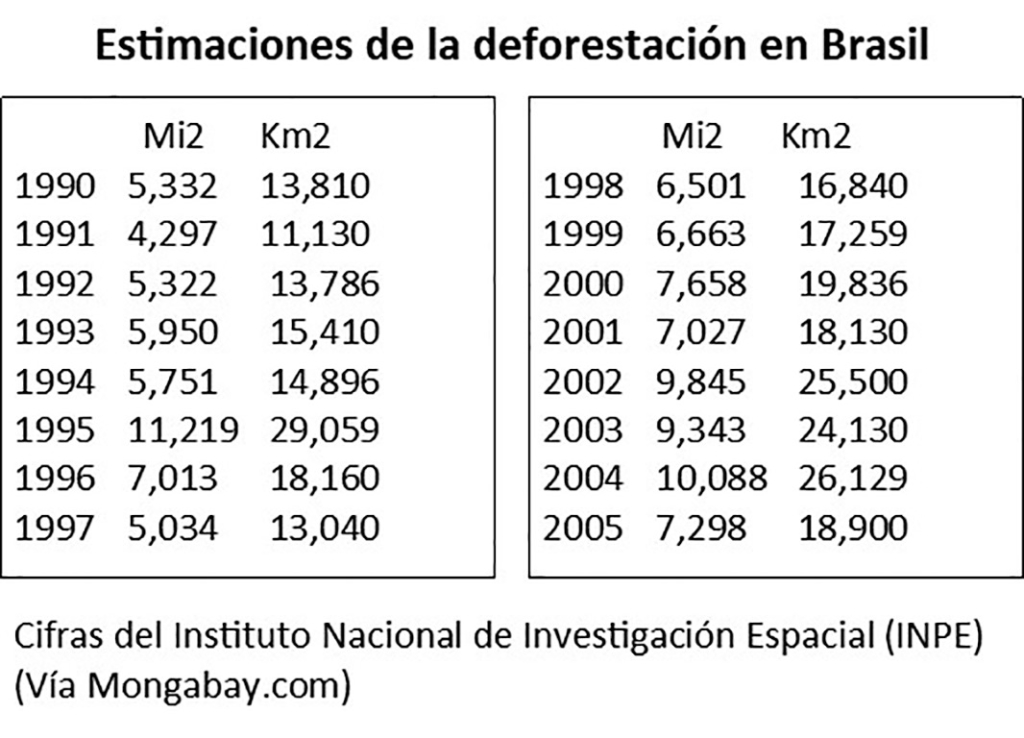
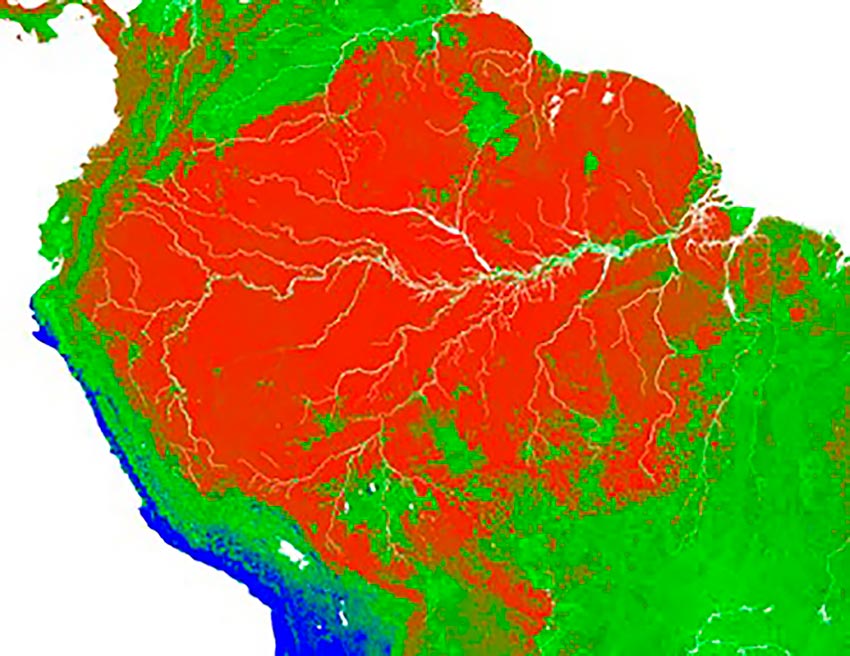
Sousrce: Mongabay.com
The Amazon River, the key of rainforest and an entire continent
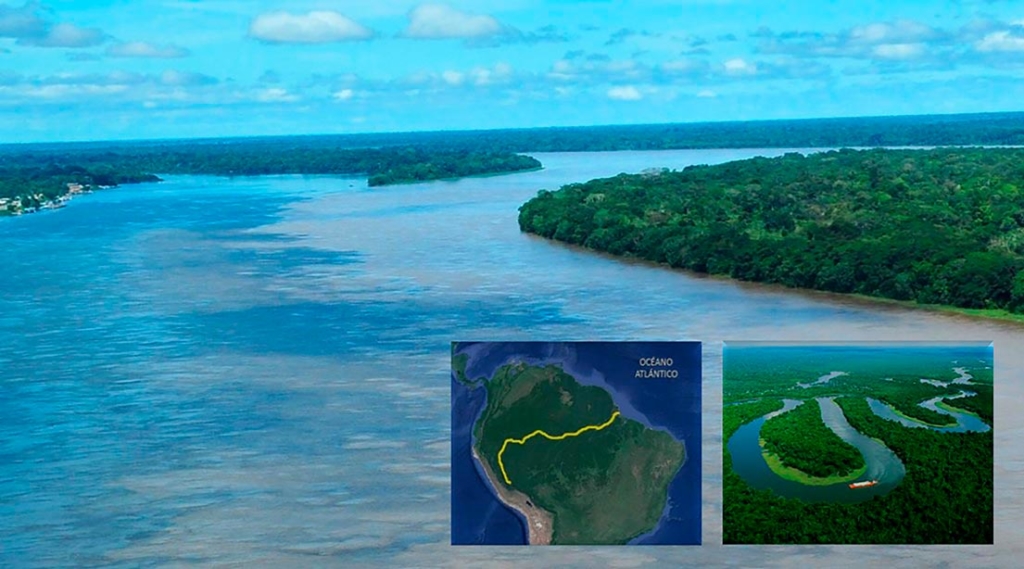
Source: Notifications-online.systems
The Amazon River and its thousand tributaries make up the largest and most powerful watershed on the planet. Thanks to this enormous expanse of waters and wetlands, the Amazon rainforest, called the lung of the world, was it grew for millions of years. This wonderful system is rich in biodiversity, with millions of lives of all shapes, sizes, colors and locomotions. The Amazonas system is an authentic cloud factory that not only irrigate the jungle itself but the entire Andean mountain range, the Argentine Pampas and many distant areas, thanks to the extensive vegetation and the strength and speed of the winds.
The river quantified
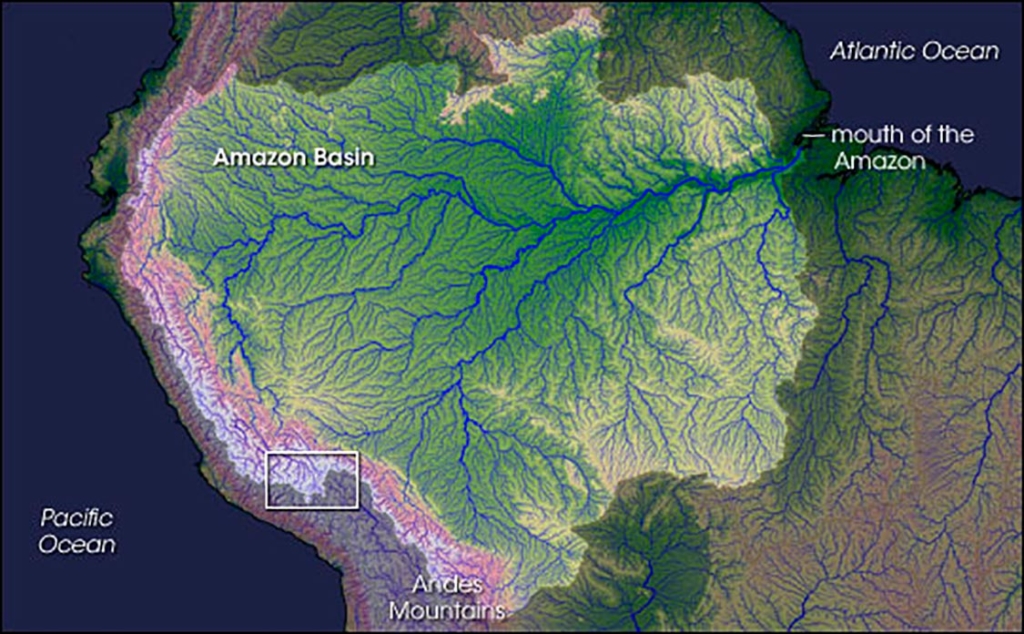
Source: Wikipedia
It is the longest and mightiest river in the world
It has seven thousand kilometers in length
Its width is between 1.6 and 10 km
In rainy seasons up to 48 km +
It has between 15 to 20% of the world’s fresh water
The Amazon delta is 240 km wide
In it, more than 1000 rivers converge
25 exceeding 1000 km in length
For the most part its slope is very low. Between Iquitos and the delta (3646 km) it descends just 10.6 cm. That is why in this stretch the river is very slow and the curvatures abound.
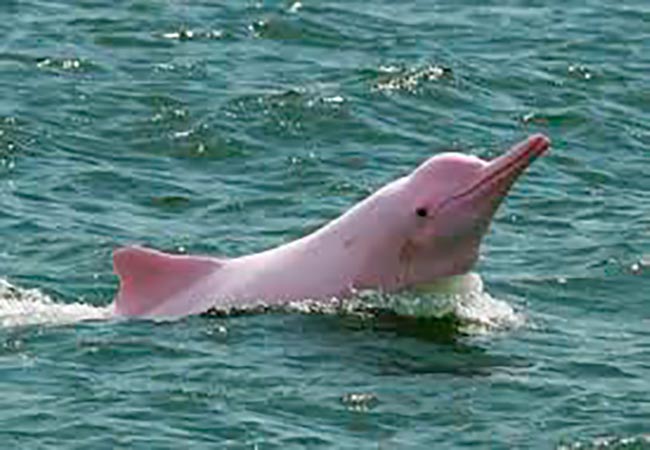
Source: Wikipedia
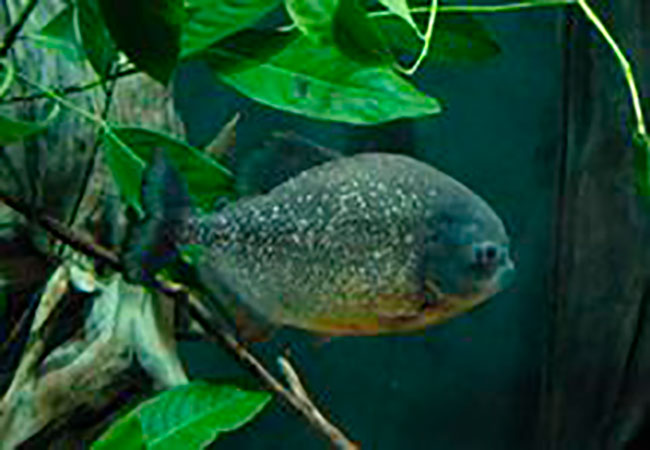
Source: Wikipedia
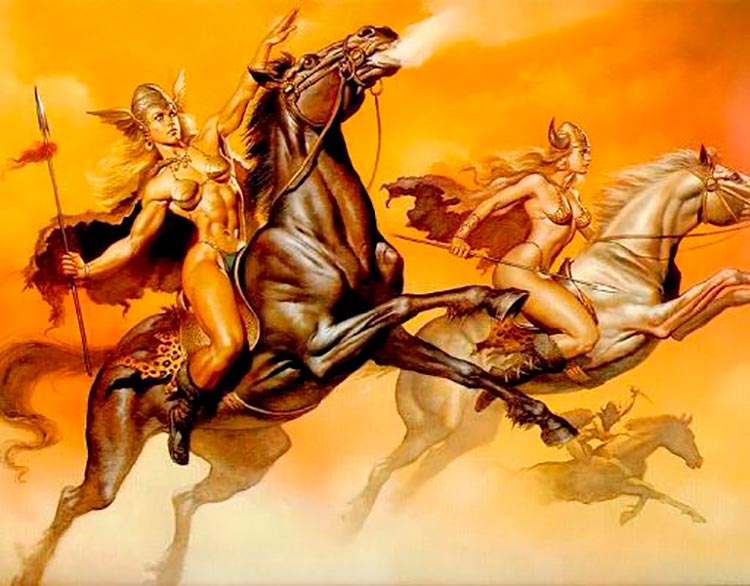
Source: Historiageneral.com
The myth of the Amazon
From Greek mythology:
“He tried to help Odysseus, who visited him when he returned to Ithaca. Eolo treated him very well and gave him a favorable wind, in addition to a bag that contained all the winds and that had to be used with care. However, Odysseus’ crew believed that the bag contained gold and opened it, causing severe storms. The ship returned to the shores of Eolia, but Eolo refused to help them again.”
How a vegetable unit works in the rainforest
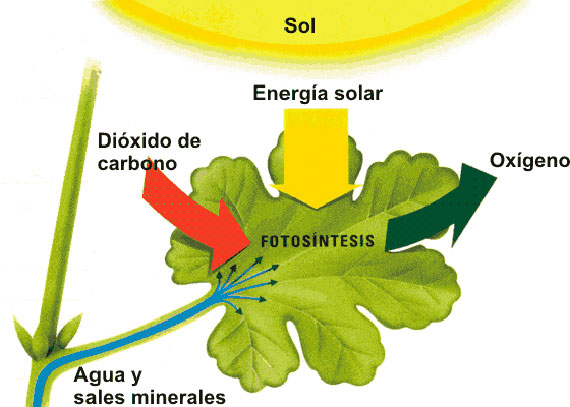
Source: Areaciencias.com
What is photosynthesis

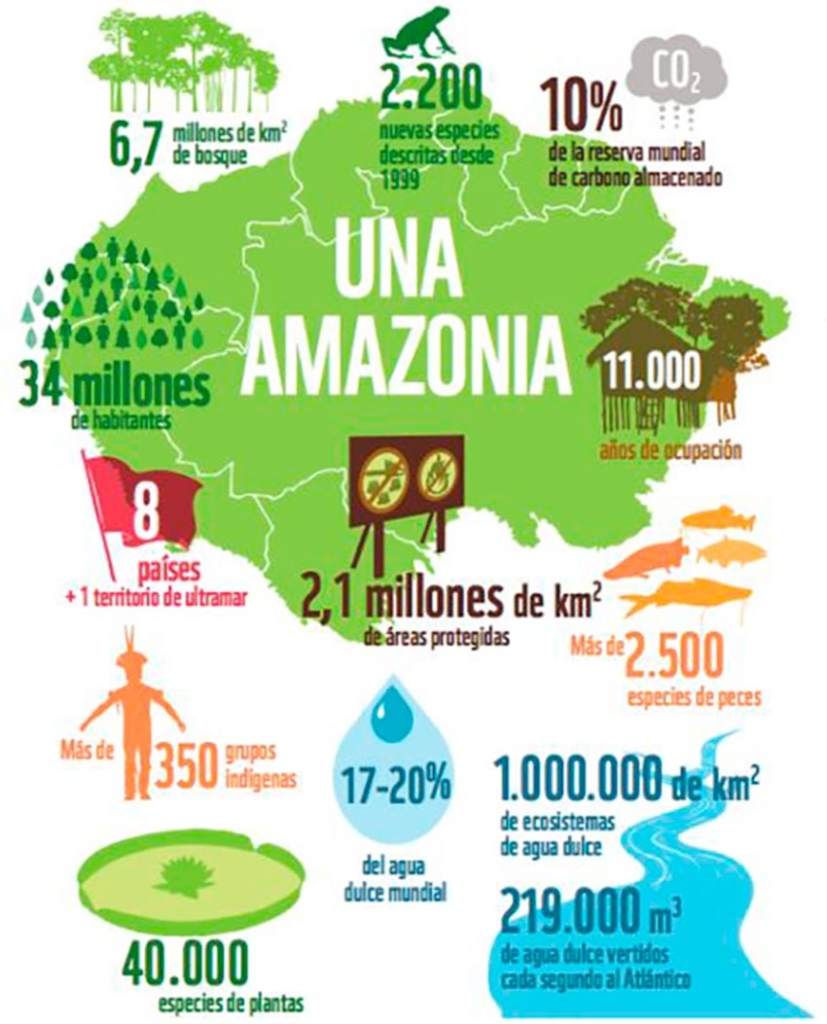
Source: Ecosistemas.ovacen.com/bioma/selva/
How the Amazon rainforest works
The progressive destruction of the Amazon
Amazon Rainforest – Damage by humans
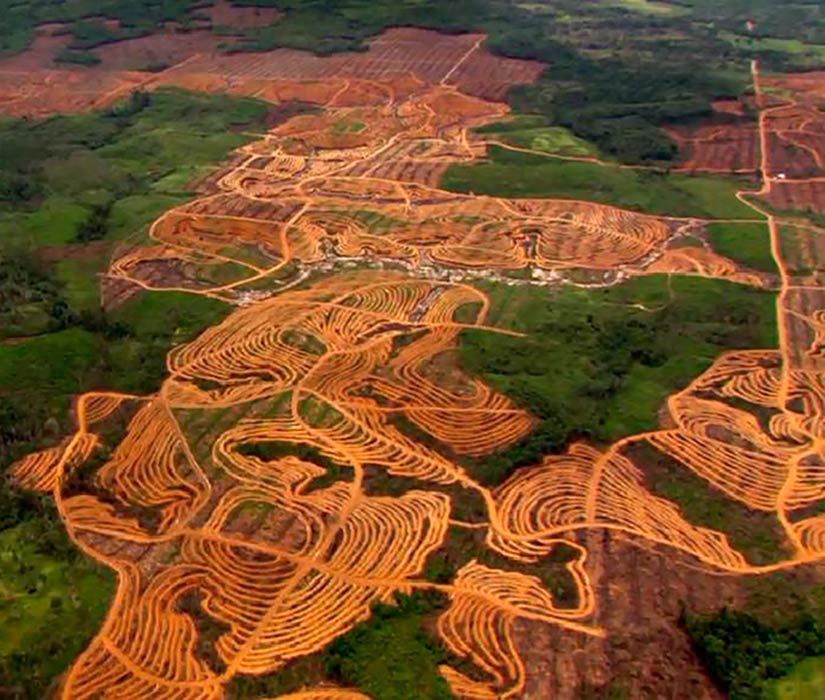
Source: Sauvonslaforet.org
Wooden door – Damage by termites
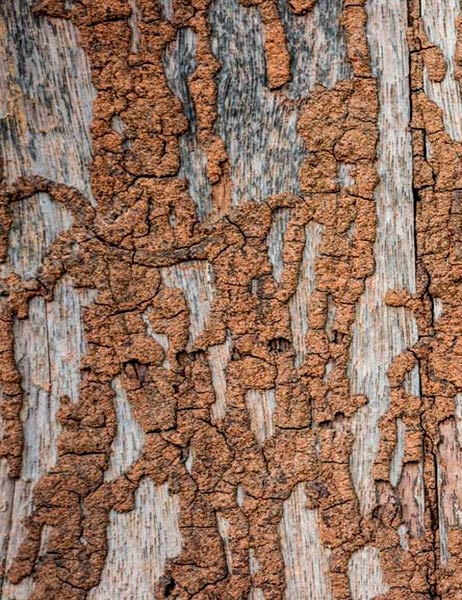
Destruction caused by mining
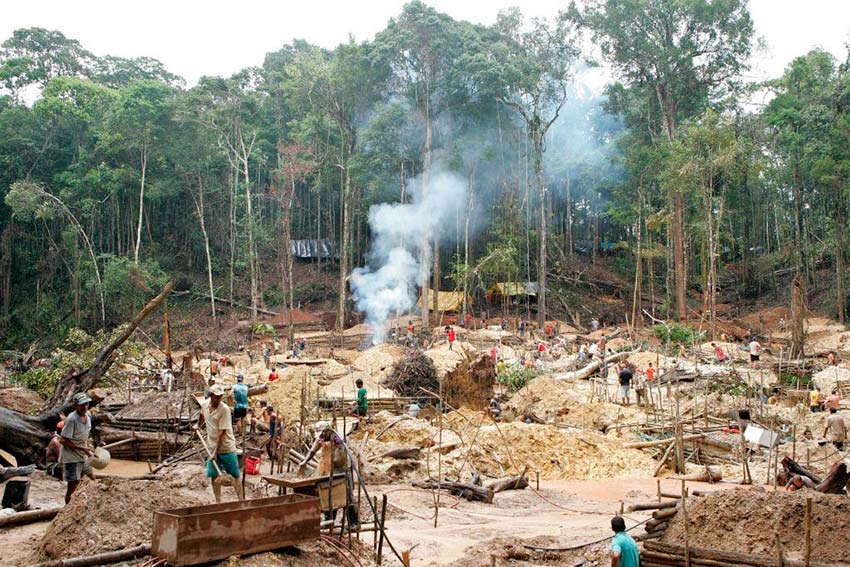
Source: Conozcamos Todos Los Rios De Nuestro Planeta
A trunk
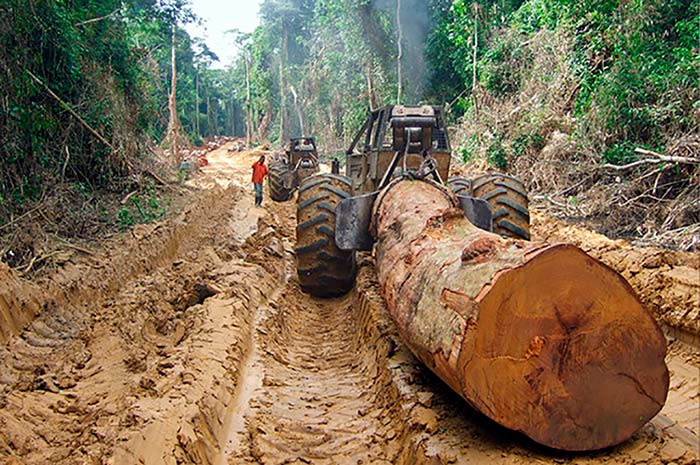
Sousrce: Sauvonslaforet.org
In the Amazon it is very advanced the destruction of the forests to give way to land for agriculture, livestock, the wood sector, oil and mining exploitation, construction of roads, pipelines, hydroelectric dams and urbanization. In addition, about 30 million people live in the Amazon basin. All this represents a human intervention on a large scale, never before happened on the planet, so there is no previous experience of something like this. If it does not stop, it will irreversibly affect the lung of the world and therefore all the inhabitants of the Earth.
How many trunks?
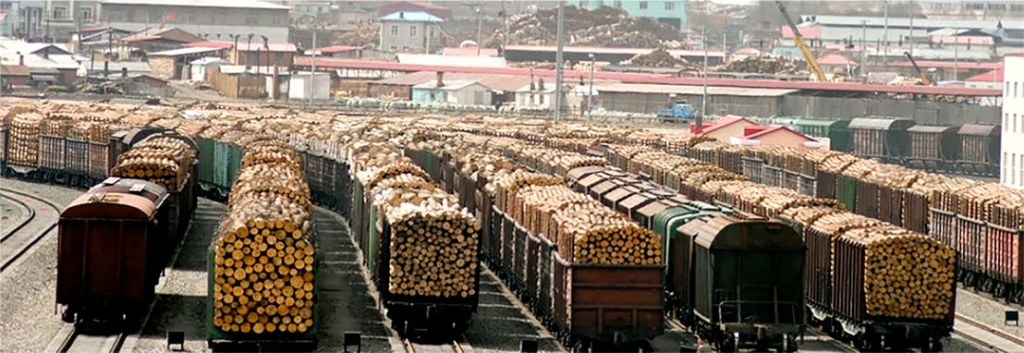
Source: Maderea.es
The 12 threats that are in progress now on the Amazon jungle
1. Cutting down trees to supply the wood industry
Two aerial images, probably taken from a drone
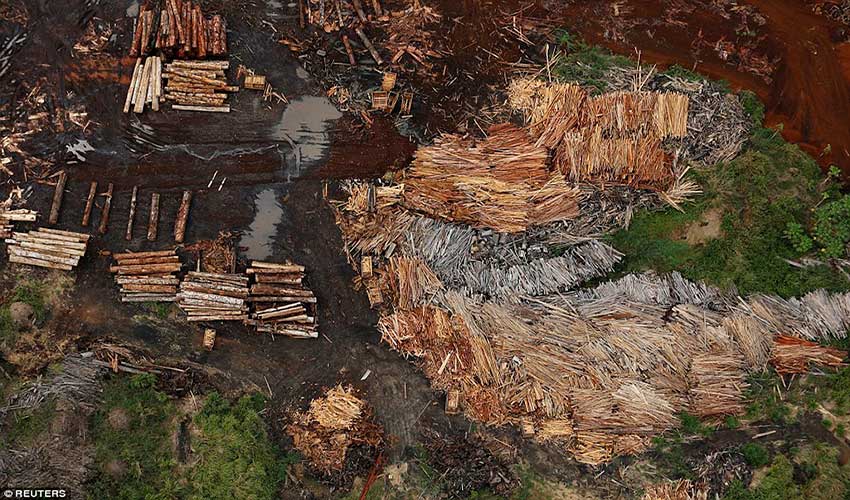
Source: REUTER
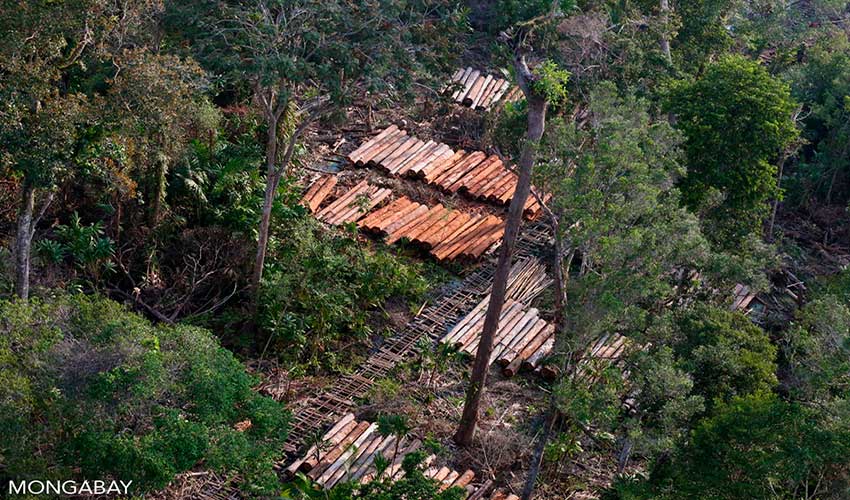
Source: wildtech.mongabay.com
How many loads like this come every day?
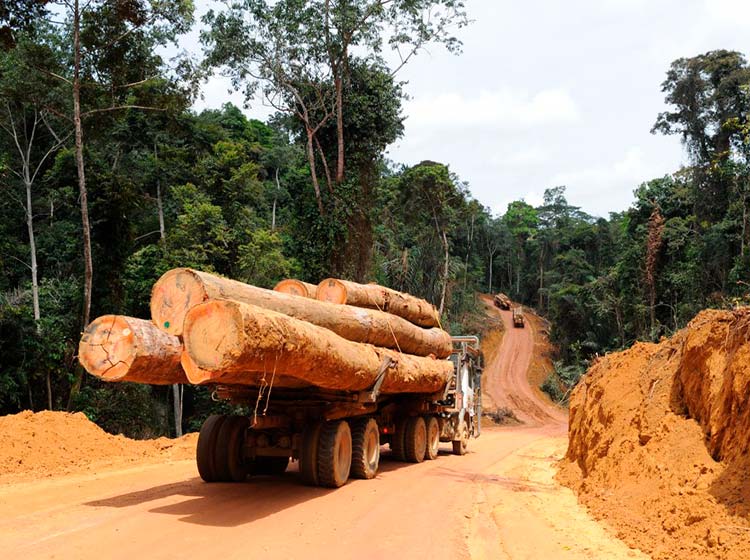
Source: Greenpeace.org
Chaos and lack of control in the large rainforest
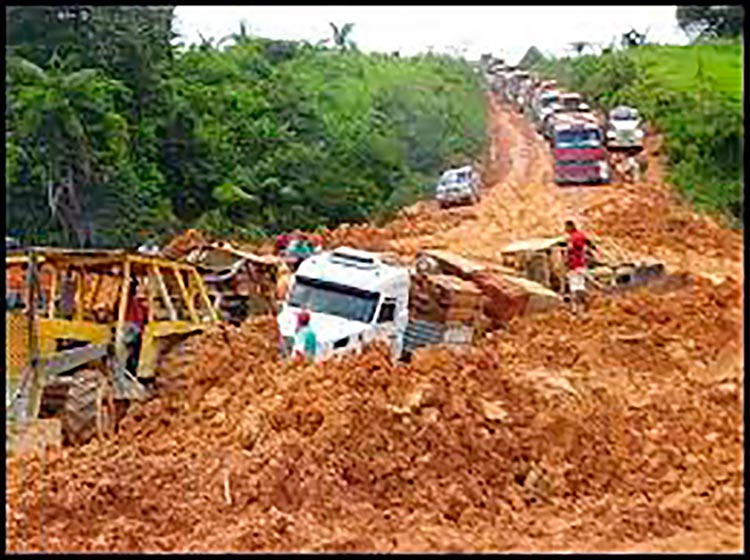
Source: Portaljipa.com.br
2. Sowing oil palm
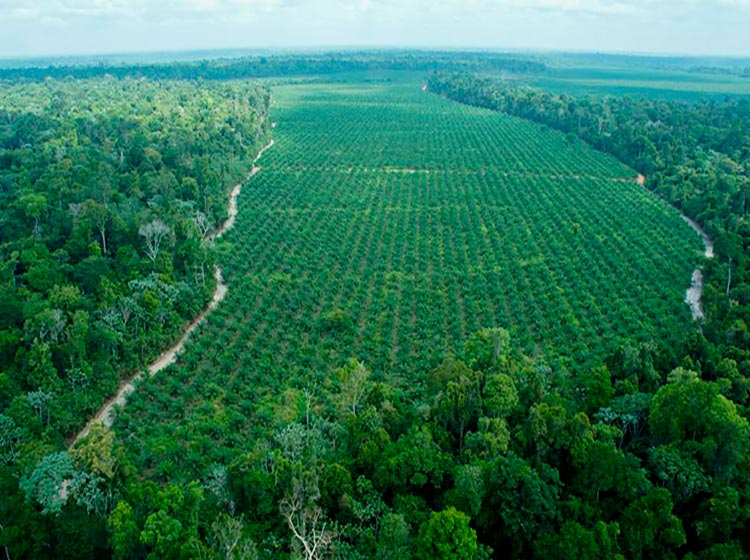
Source: Elpais.com
3. Soybean planting
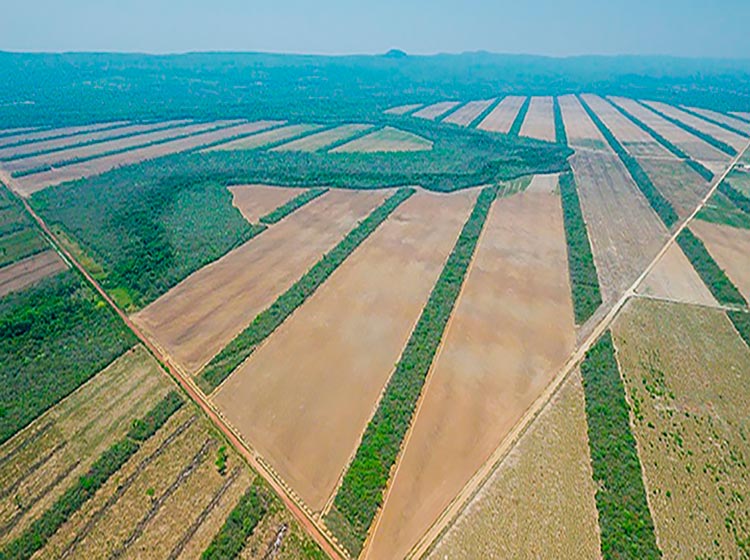
Source: Mongabay
4. Extensive agriculture
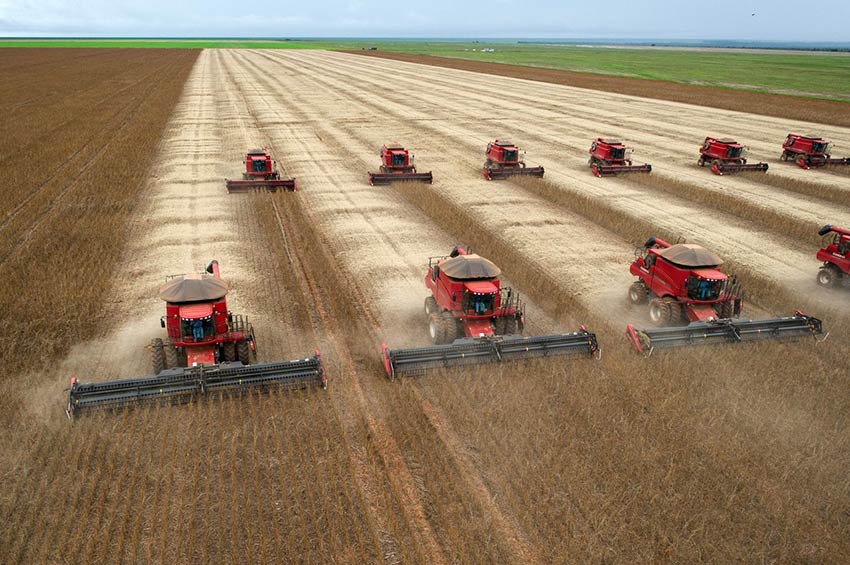
Source: Sembrandonoticias.com
5. Cattle raising
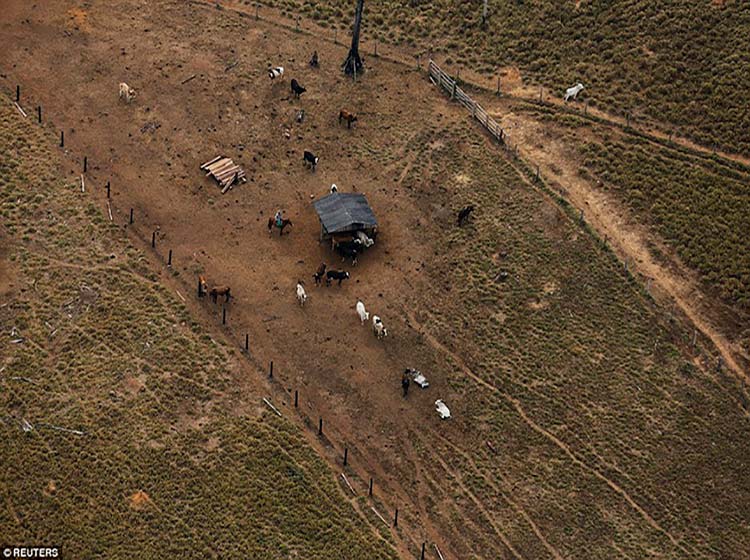
Source: Dailymail.co.uk
6. Oil exploitation
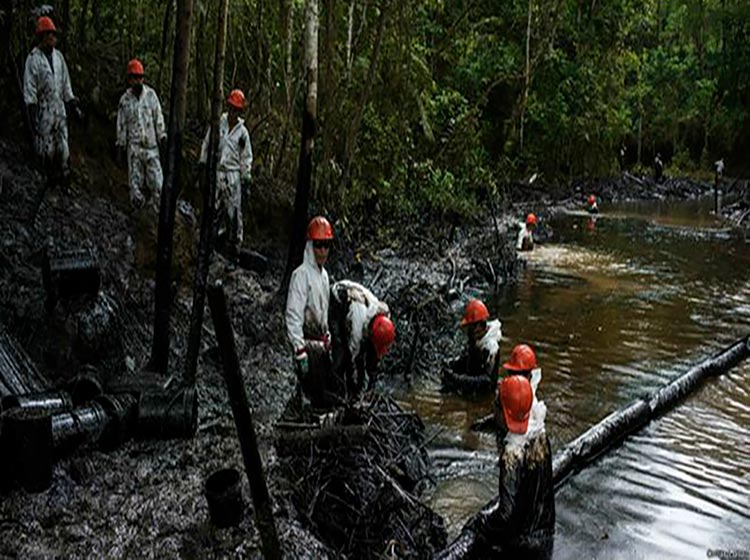
Source: Puntoycoma.pe
7. Oil pipelines
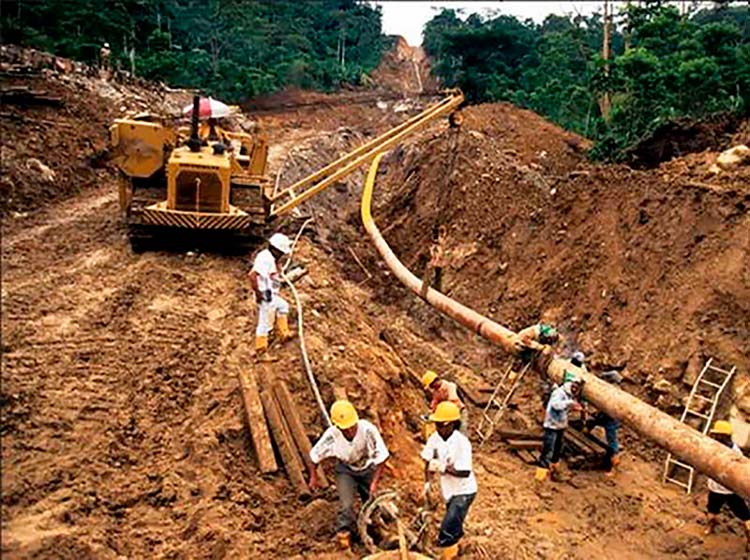
Source: Amazonwatch.org
8. Gas pipelines
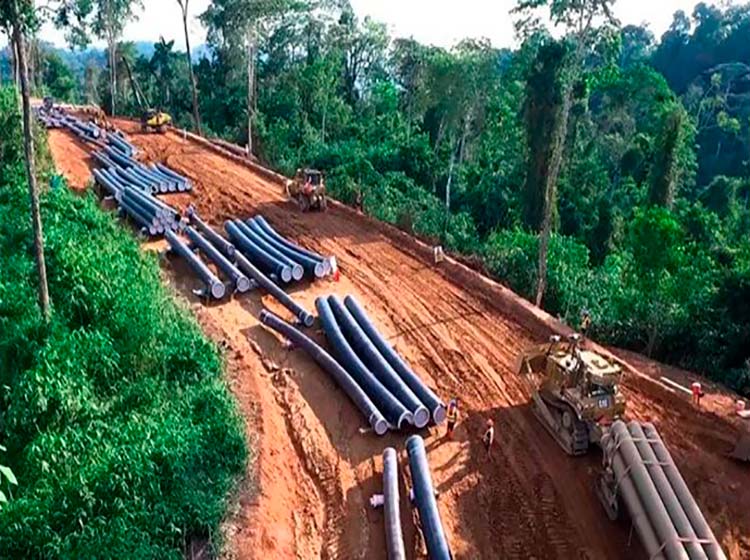
Source: Larepublica.pe
9. Mining
Mining arch of Venezuela – Photo: Salto del Ángel
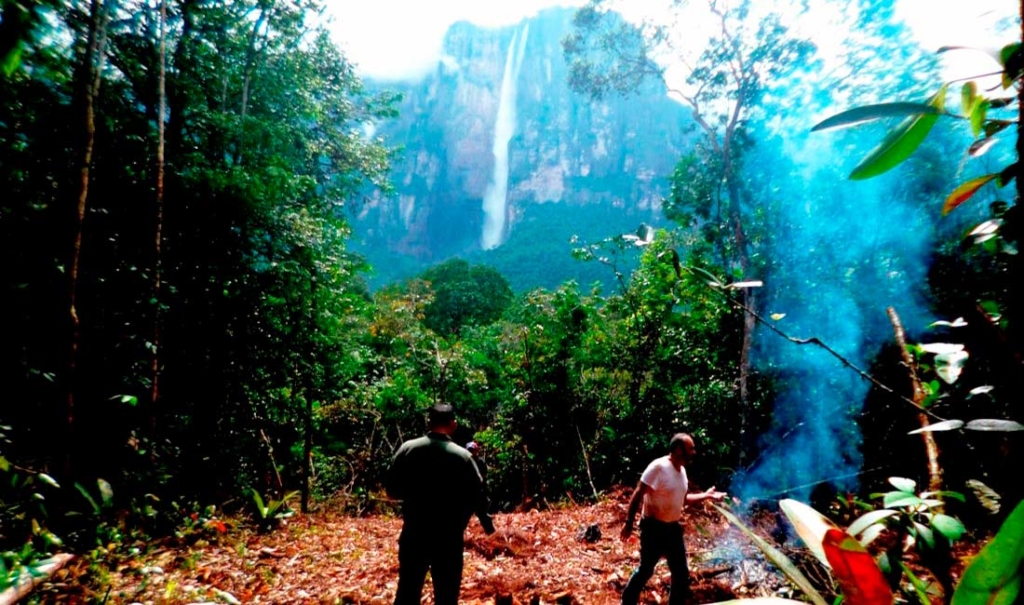
Source: Elcomercio.pe

Source: Elnacional.com 28 feb 2018
“In 2016, the government of Venezuela delivered mining concessions in 112,000 square kilometers that cover part of the northern region of the State of Bolívar and Amazonas, south of the Orinoco River. In this territory, precisely called the Orinoco Mining Arc – or the Mining Arc of Venezuela – national and foreign companies can now legally exploit coltan, gold and diamond.
With this decision, the Venezuelan government opened the doors to the development of mining in 12% of the national territory, with the hope that this activity will replace oil and become a new source of income for the State. From the beginning, environmentalists and scientists opposed this decision. For this group the Venezuelan government did not comply with an environmental impact study of the Mining Arc of Venezuela or prior consultation with indigenous peoples, as mandated by the Constitution. ”
Translate by SGK-PLANET from Mongabay.com – Arco Minero de Venezuela
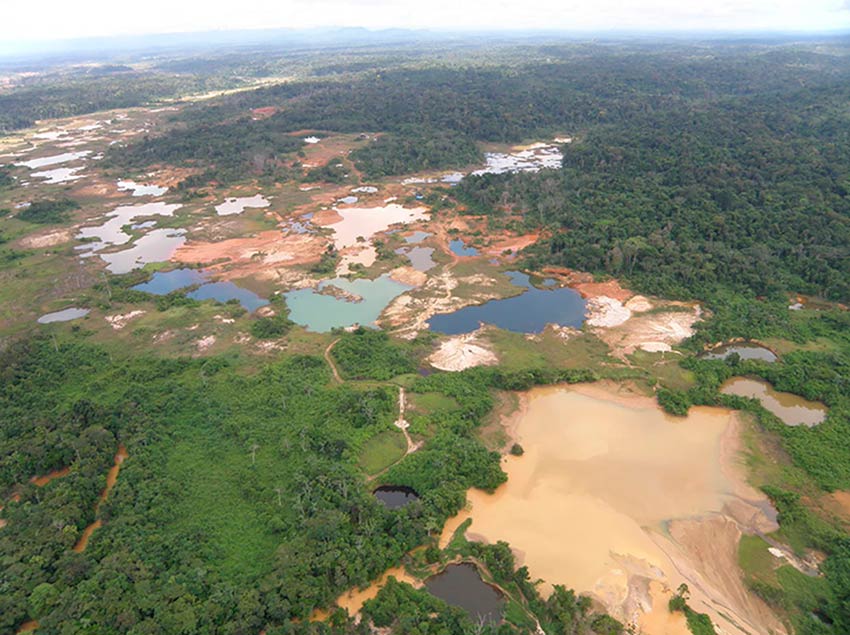
Source: Elnacional.com 28 feb 2018
10. Roads that go through the rainforest
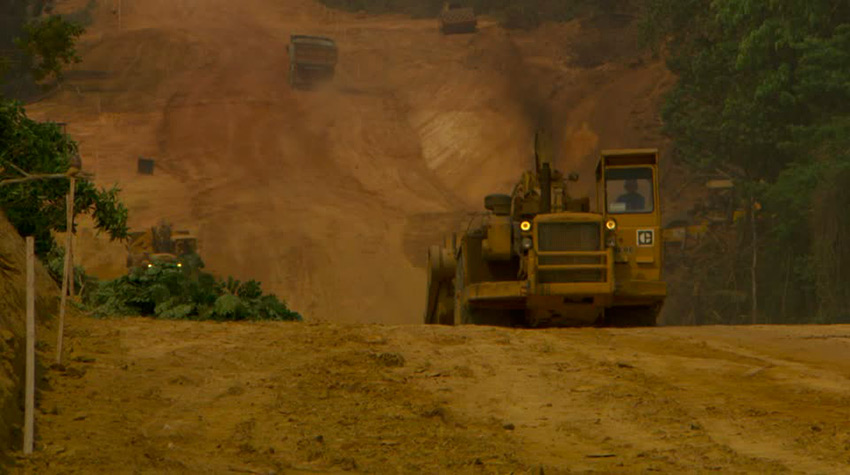
Source: Footage.framepool.com
Penetration roads in the largest rainforest on the planet
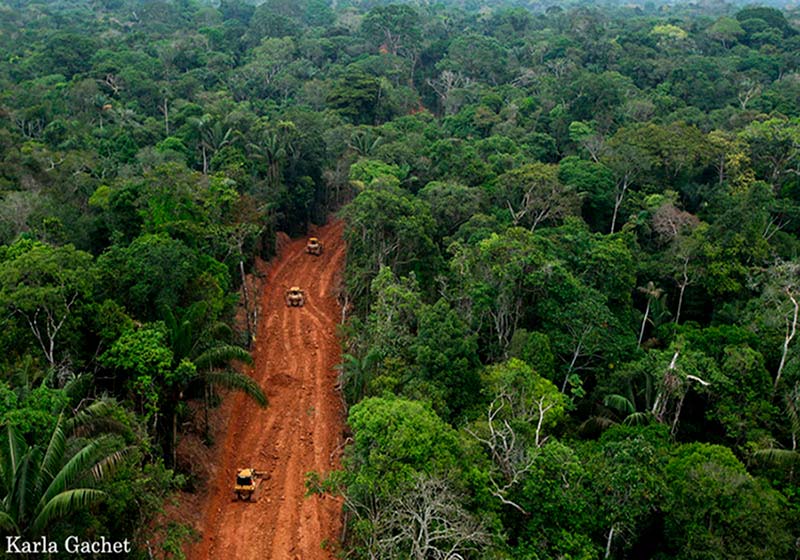
Source: Karla Gachet
More roads greater intervention of the rainforest
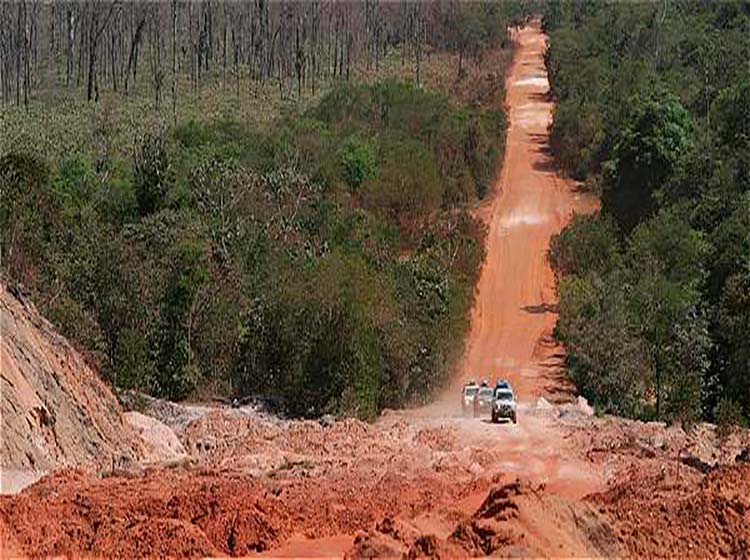
Source: Douglas chronicle
More roads greater intervention of nature
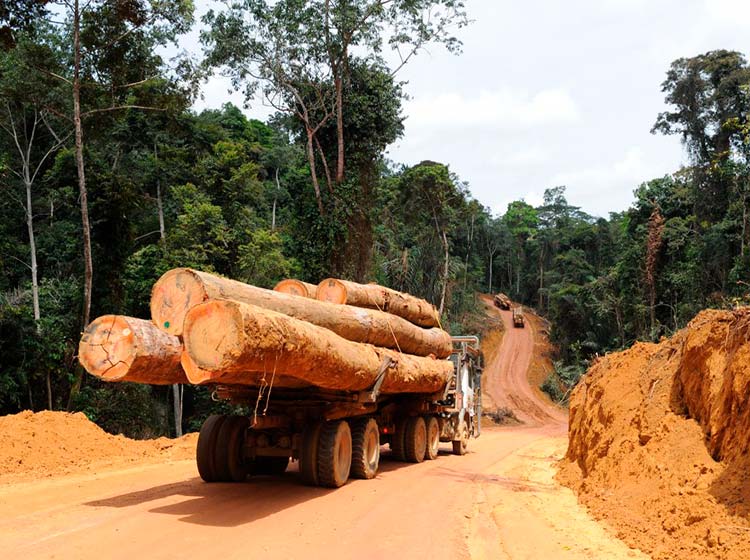
Source: Gabonactu.com
Road “Interoceánica Sur” BR-384
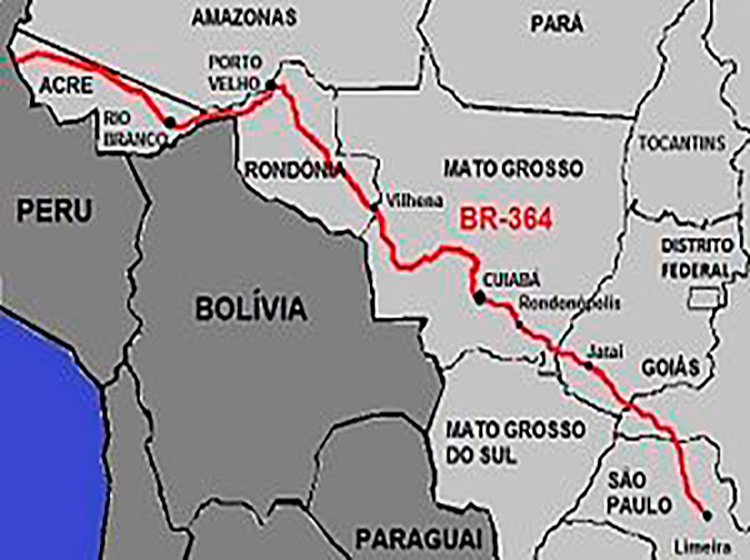
The South Interoceanic Highway BR-384 that crosses the Amazon
In December 2010, the mega-highway “Interoceánica Sur” BR-384, of 5,404 kilometers, that connects the Peruvian Pacific with the Brazilian Atlantic, was completed. “The highway opened a vast sector of the most appreciated forest on the planet to the world economy. Thousands of people are coming to inhabit it, and some others to set up their businesses from countries such as China, Russia, France, Mexico or Chile. The triple border of Brazil, Peru and Bolivia,
once populated only by ancient trees, wildlife, and some 100,000 inhabitants in its most conserved sectors, was now filled with noise: the music of the new towns, the hum of the chainsaws, the bustle of shops of all kinds and the roar of powerful engines pulling the gold that hides its red earth.” From the report of Semana.com in conjunction with Interoceánica.
Rodovia Transamazónica BR-230
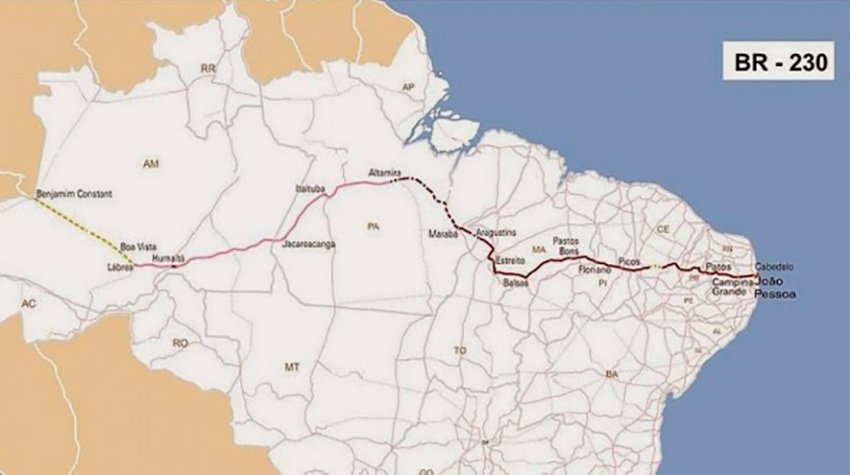
The useless Rodovia Transamazónica BR-230
“They call it Rodovia Transamazónica BR-230, and it has nothing less than 5,000 kilometers. A pharaonic work that began in the 70s and was never without controversy. It is one of the reasons – the other was economic – that it would not finally be completely paved. In fact, much of its route is still dirt roads that cross the center of the Amazon.
When the project was raised, the idea was to reconvert jungle areas into agricultural land. But it turned out that the soil of the Amazon basin was not very stable and was flooded in the rainy season, which threw the development projects by land. By the time the Brazilian government realized, the “bad” was done: the environmental consequences, such as deforestation, had not gone back. Today, the Transamazon is one of the least traveled roads on the planet … ” www.marca.com
11. Hydroelectric dams that flood and disrupt ecosystems
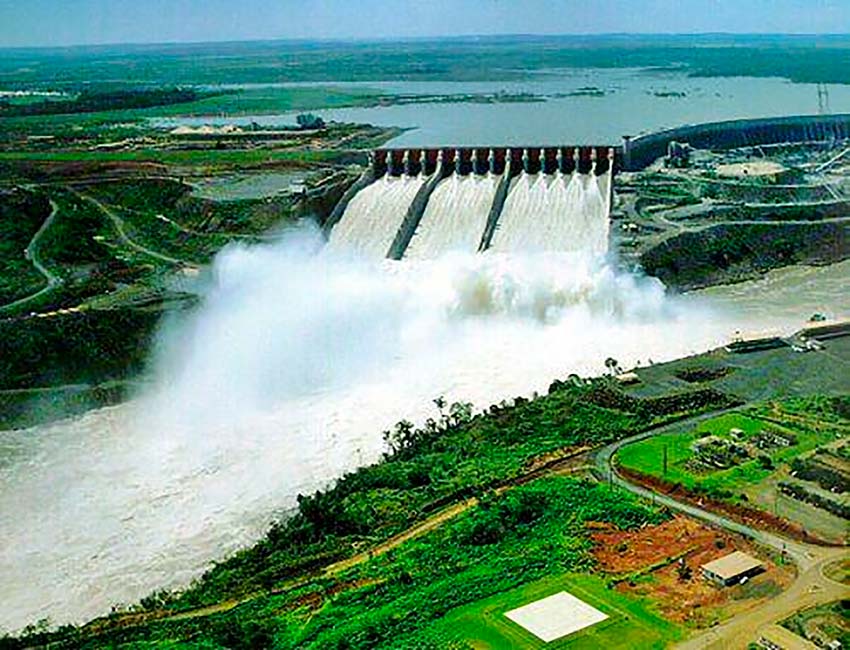
Source: Diarioecologia.com
According to information from El Espectador newspaper, “In the basin of this river there are 140 dams operating and 428 more are planned to be built. Study published in Nature warns that these infrastructures would trap many essential substrates for the organisms that inhabit it. Although the vastness of the Amazon could seem infinite, the damage that almost 400 additional hydroelectric plants could cause is irreparable.”
The study involved ecologists, engineers, economists and geologists from several universities in the United States.
12. Urbanization of the rainforest
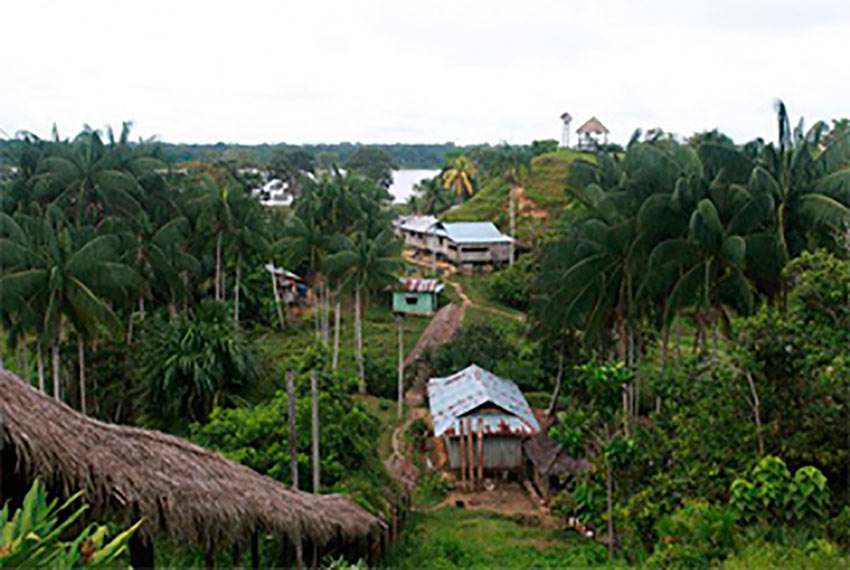
Source: News.mongabay.com
Greater consumers of wood
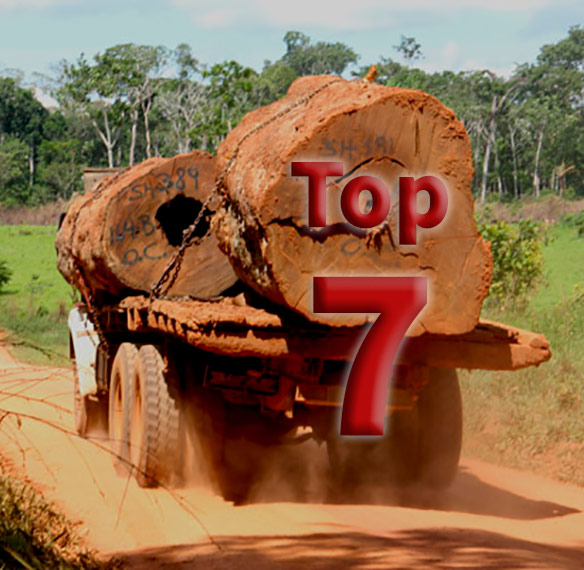
1. China 47%
2. USA 11%
3. Russia 3%
4. Germany 3%
5. Japan 3%
6. Brazil 3%
7. Turkey 3%
Consequences of deforestation
The twelve dangers that we have just seen have a common denominator: they are spaces that grow at the expense of the destruction of the forest. This is how we saw the felling of trees to satisfy timber markets, soy oil and oil palm sowing, extensive agriculture, cattle ranching, oil exploitation, pipelines, construction of roads and roads to new exploitation areas, hydroelectric dams and the urbanization. All steal spaces to the Amazon and its ecosystems through deforestation, leaving huge gaps in the world’s greatest biodiversity, with incalculable consequences. The first victims are innumerable species evicted from their habitats. Some have had to flee to other places and the less fortunate have succumbed in their attempt to find new places or adapt to them.
The second consequence is more serious and of greater encouragement: The drought in the Amazon.
Drought and desertification of the tributaries of the Amazon River
Entire rivers have dried
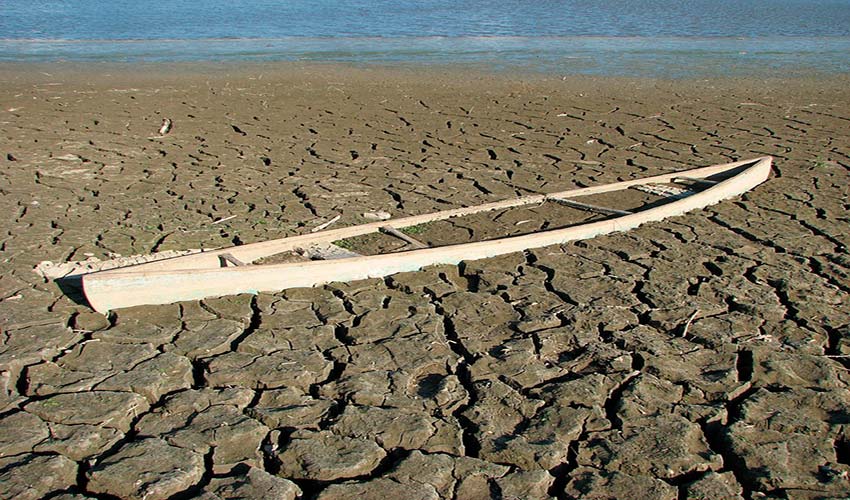
Source: Pixabay.com
Main cause of the drought
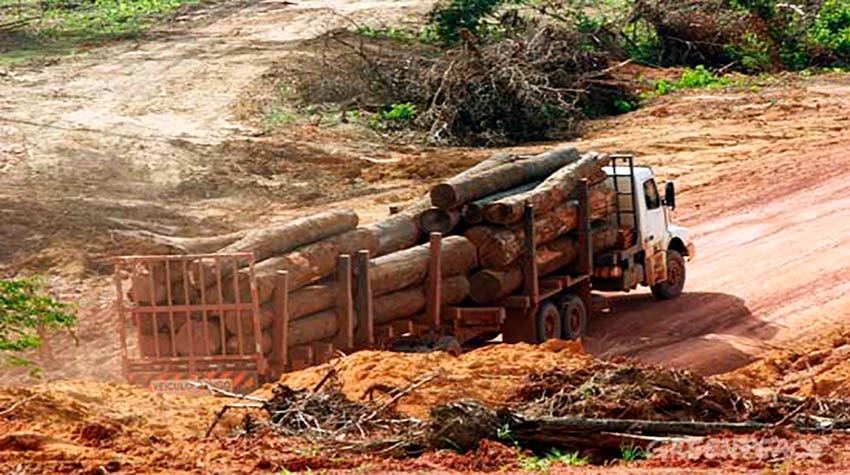
Source: Planeta Vital
Fish victims of lack of water
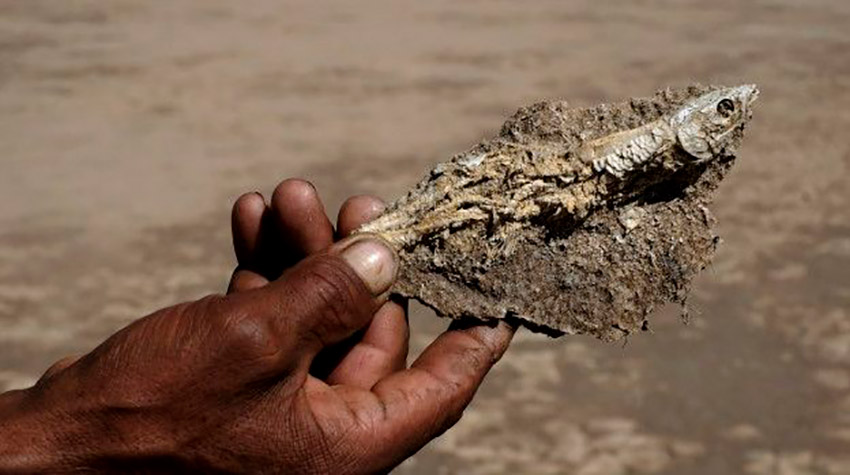
Source: Monografías.com
Boat trapped in an affluent that dried
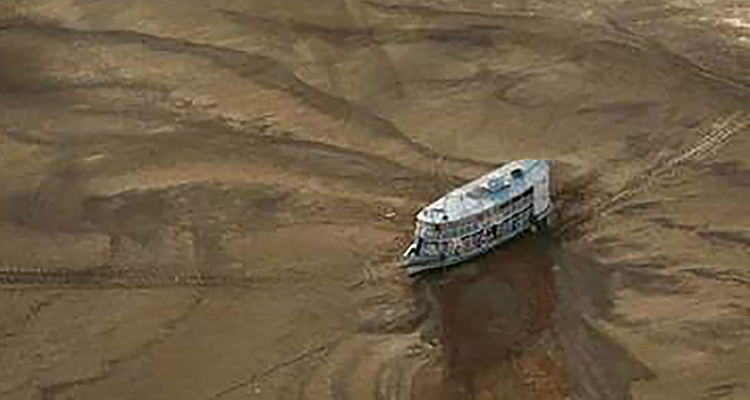
Source: AP/Greenpeace
Canoe fishermen in the midst of drought

Source: Monografías.com
The global drought, the biggest challenge we will face
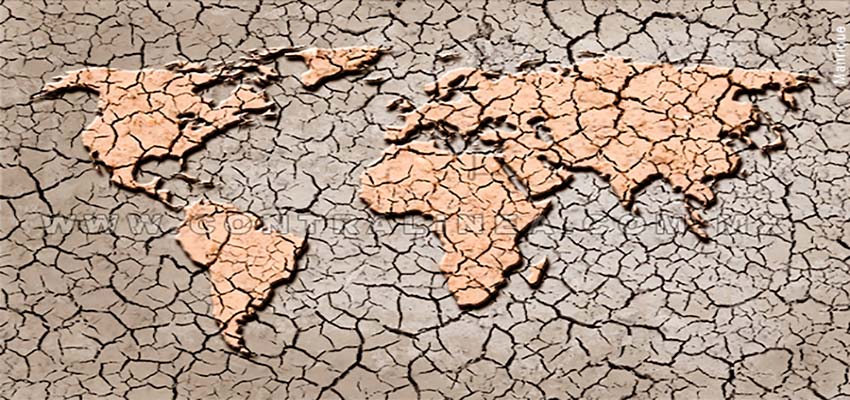
Source: Contralínea.com.mx
NASA has revealed a general reduction in the greenery of the Amazon forests that surpasses 1.5 million square kilometers.
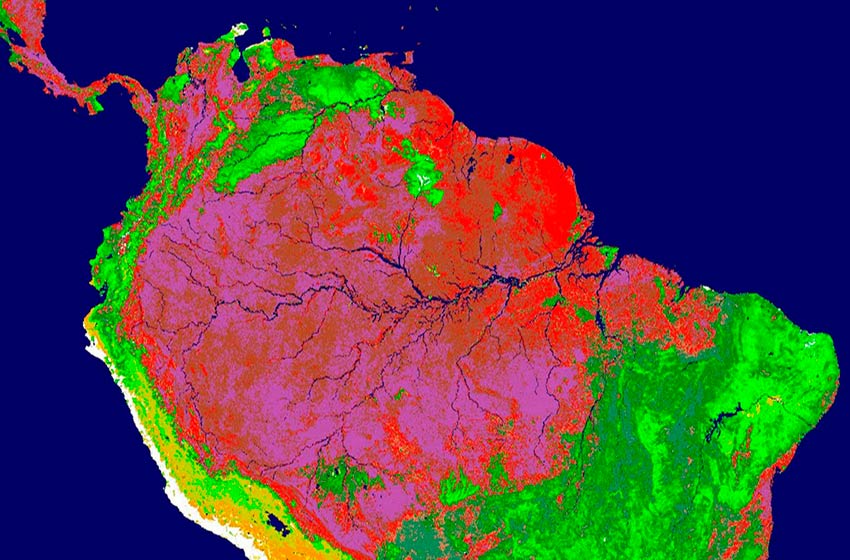
Source: Nasa / Diario ABC
Drought is one of the greatest challenges that humanity will have to face from now on. Desertification, water scarcity, the disappearance of moisture from the jungle and its surroundings, the loss of crops and consequent famines are as important and dangerous issues as the melting of glaciers and the rise in the level of the seas. If the deforestation of the forest does not stop, the global drought would be unstoppable and will knock on our doors before the de-icing itself does.
What happened in Borneo must call us to reflection
There the humid forest disappeared in just the last three decades of the last century as a result of deforestation for the sale of wood. Today Borneo, after two third parts of its jungle were depleted, giving way to planting oil palm, is a dry place prone to continuous vegetation fires. Its effects may have reached distant Australia and Chile, where the greatest forest fires in its history have occurred, as we have explained in:
How Borneo already had its own Climate Change made by human hands
Birds of Amazon
Makaw
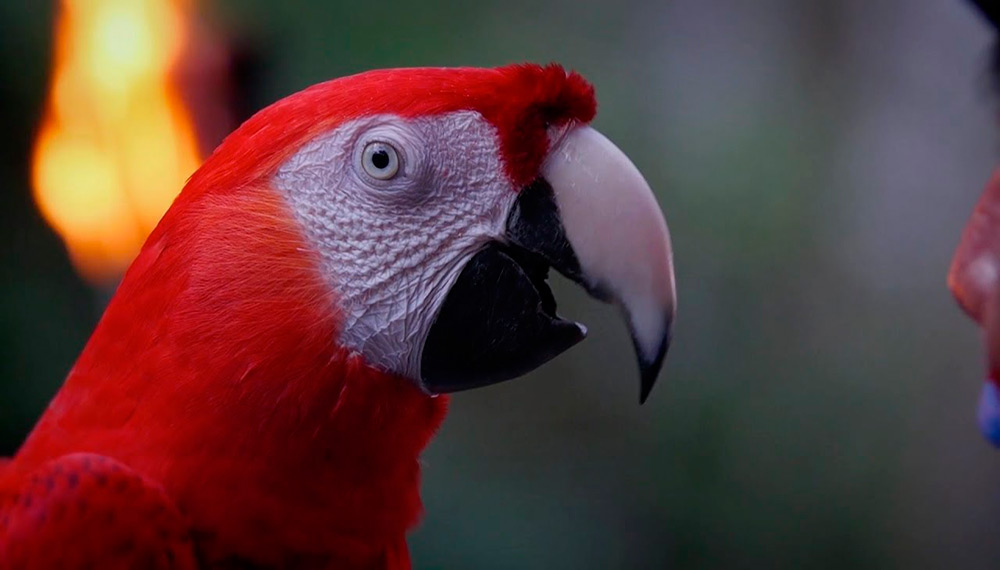
Source: YouTube
Tucan
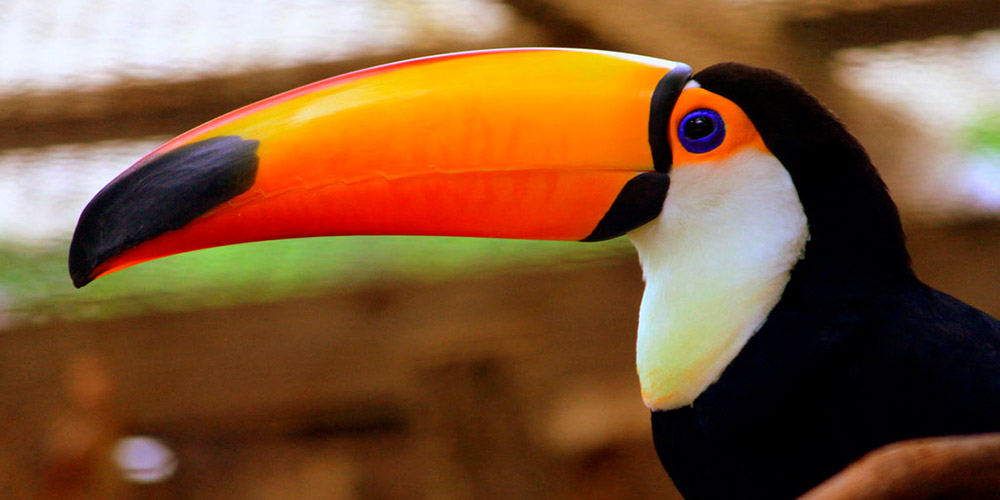
Source: Animal Corner
Blue Makaw
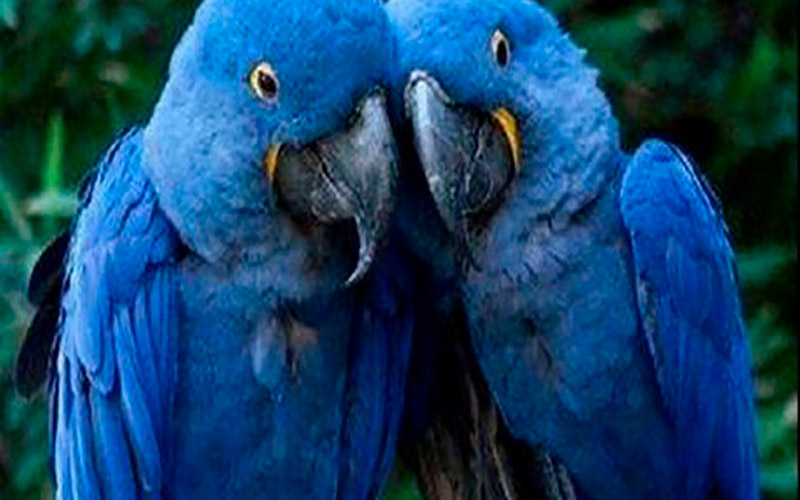
Source: Metro Ecuador
Hummingbird
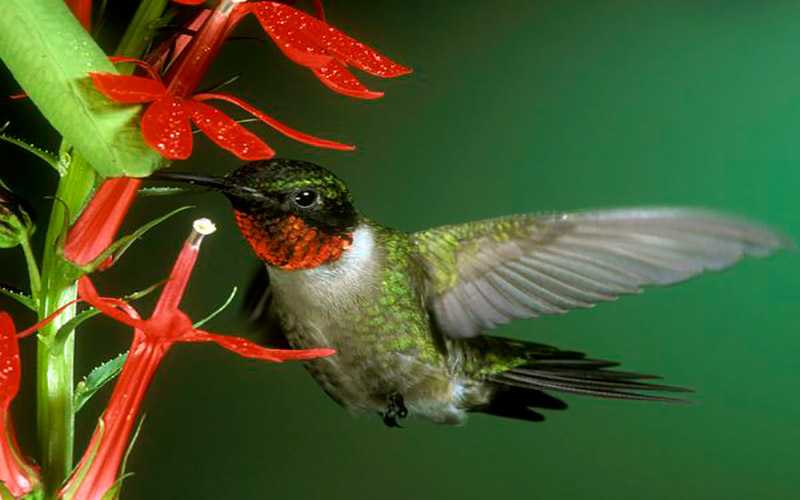
Source: Rainforestreports.weebly.com
Parrot
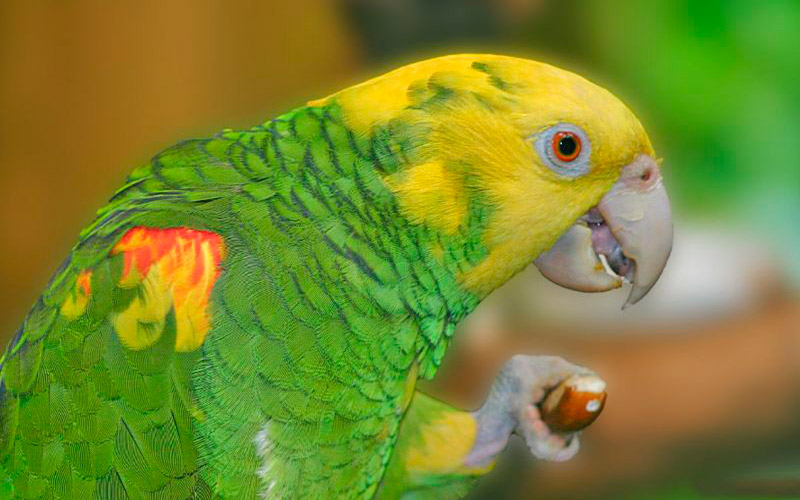
Source: Vacazionaviajes.com
Uirapurú
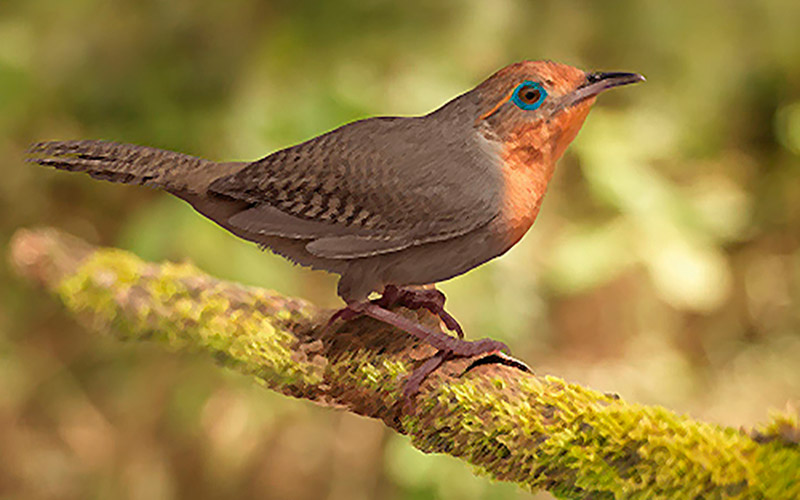
Source: Sobreleyendas.com
Mammals of Amazon
Brasilia Jaguar
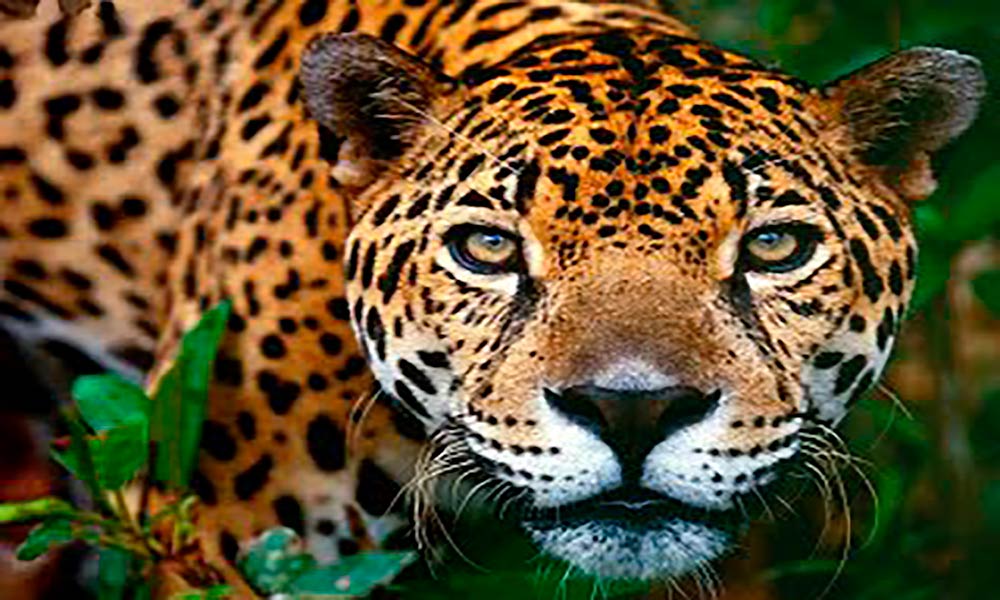
Source: 889noticias.mx
Golden lion tamarin

Source: Worldatlas.com
Sloth
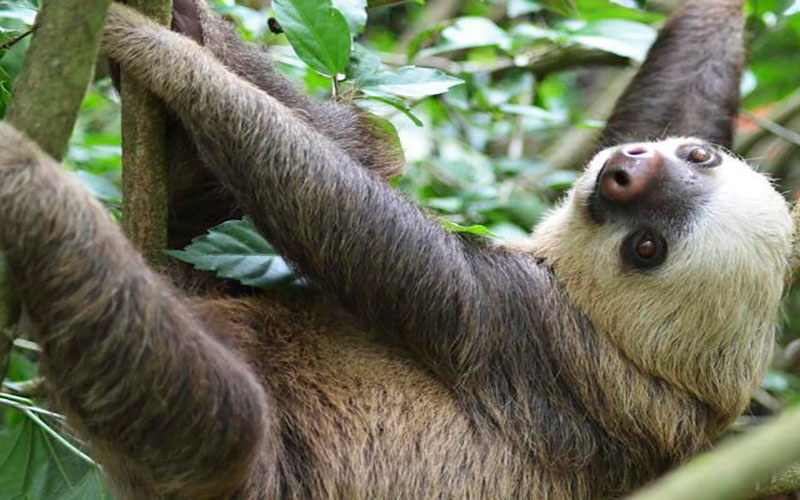
Source: Vix.com
Capybara
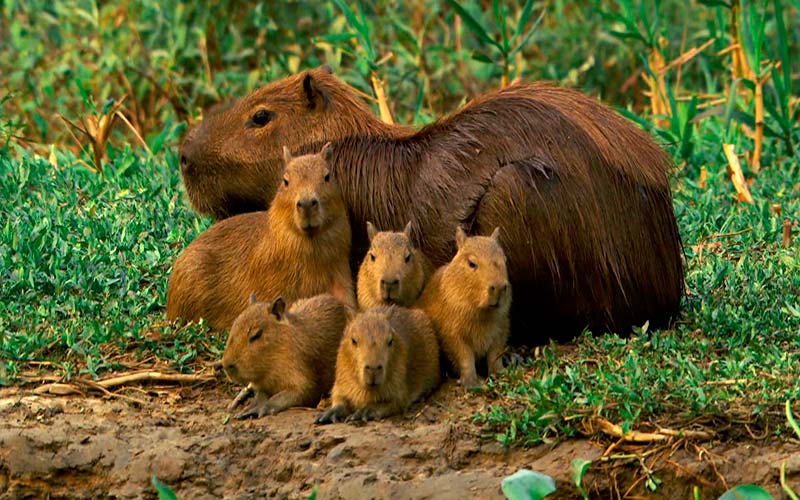
Source: Ar.pinterest.com
Kinkajou
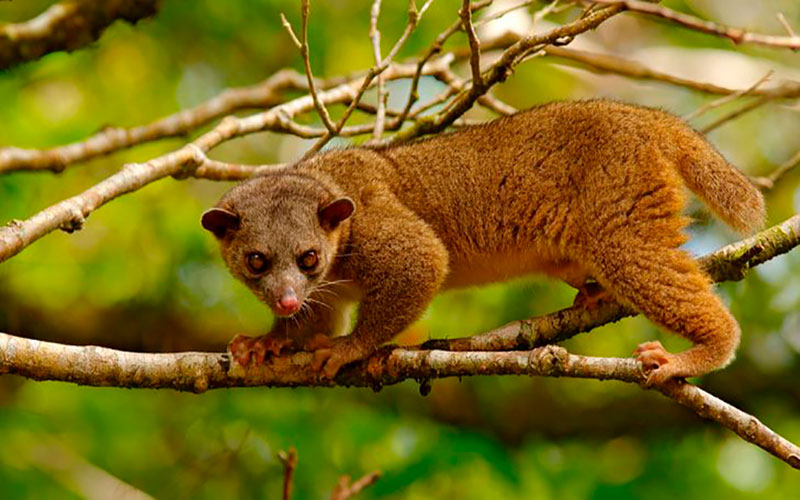
Source: Worldatlas.com
Anteater
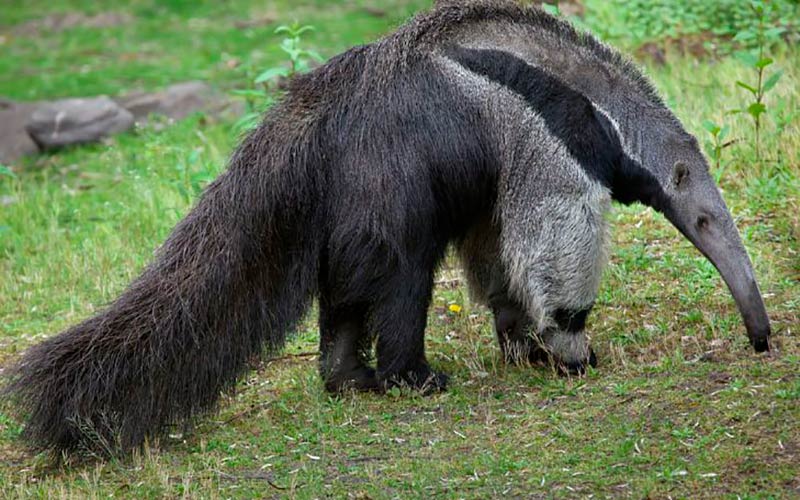
Source: Worldatlas.com
Reptiles of Amazon
Long mouth crocodile
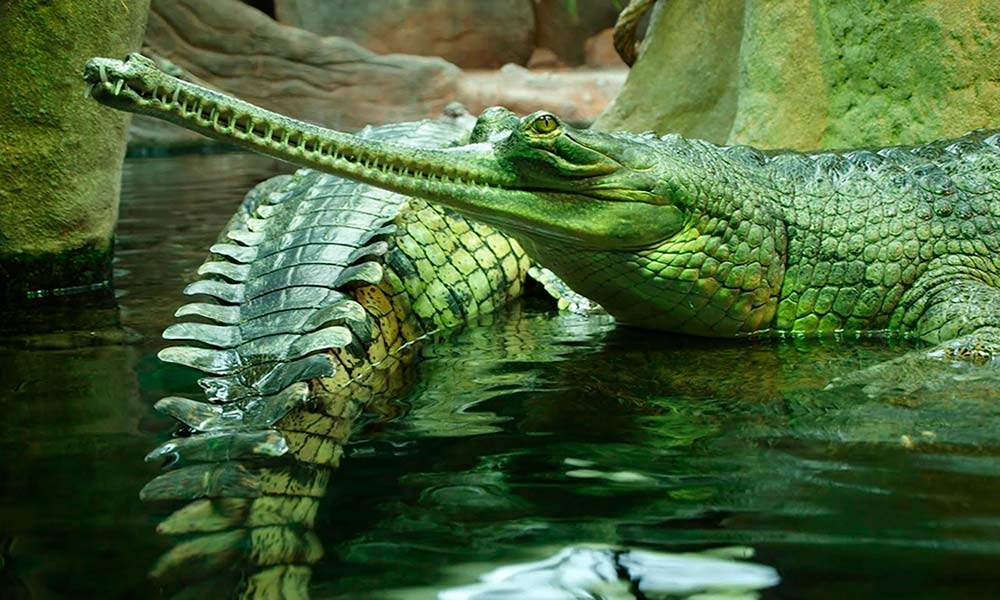
Source: Ar.pinterest.com
Iguana

Source: Fotonatura.org
Arrau Turtle
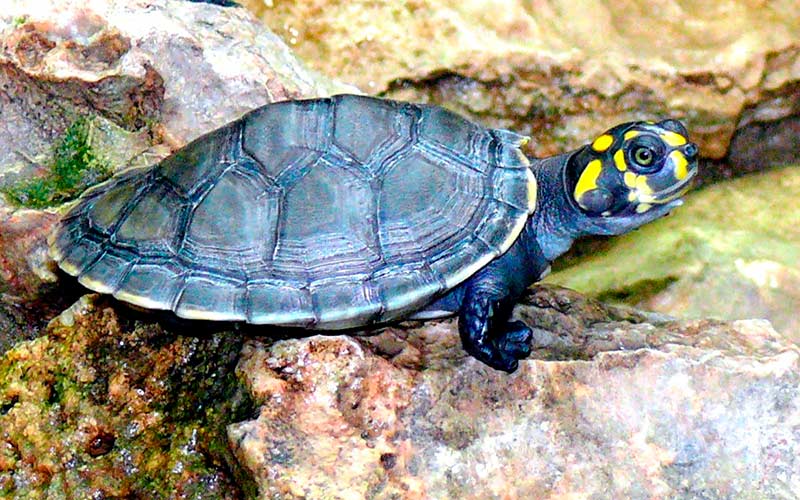
Source: Hablemosdepeces.com
Amazon mini lizard
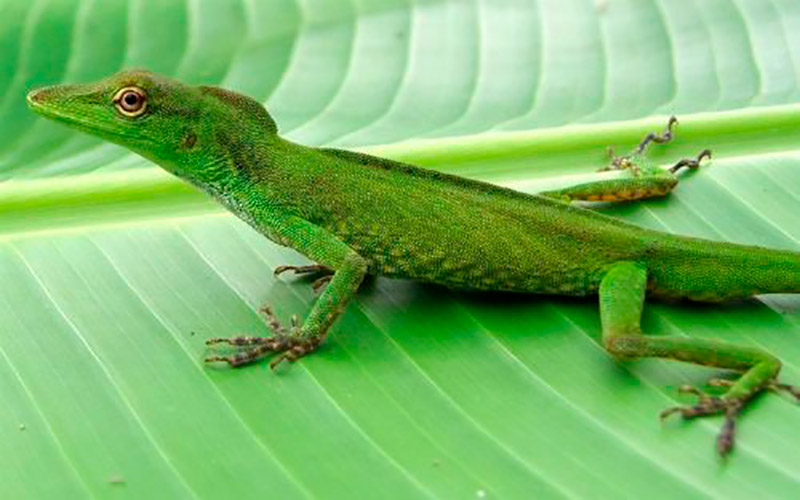
Source: Ar.pinterest.com
Green Anaconda
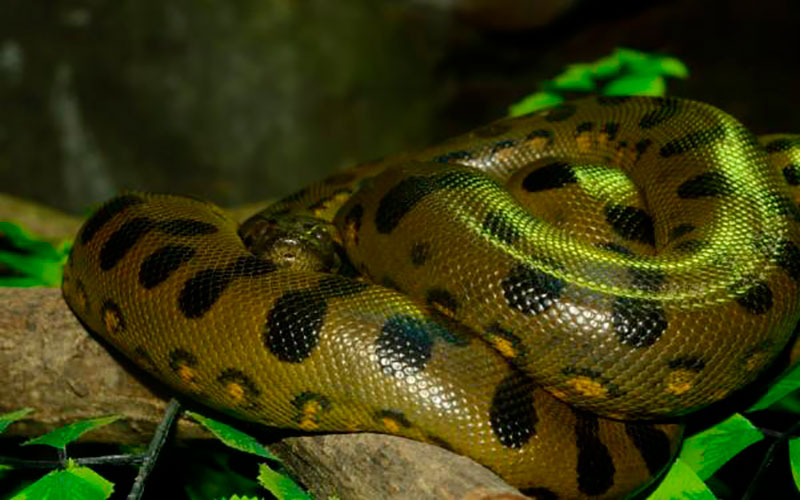
Source: Expertoanimal.com
Black Cayman
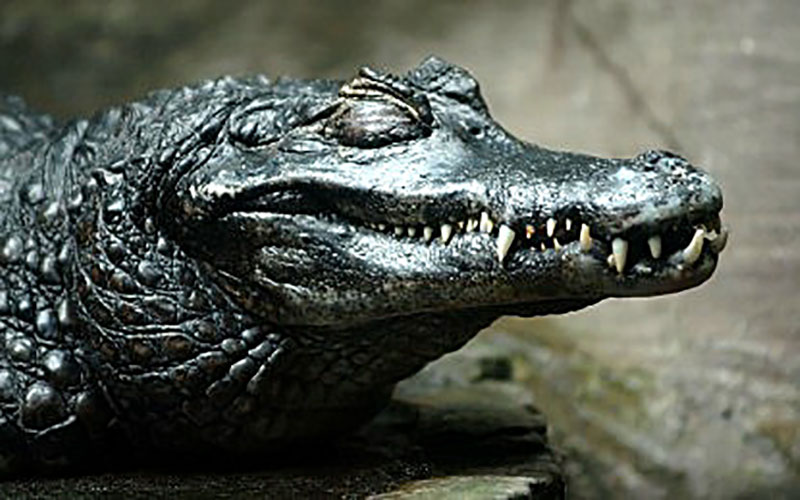
Source: Waza.org
Fish of Amazon
Disco fish
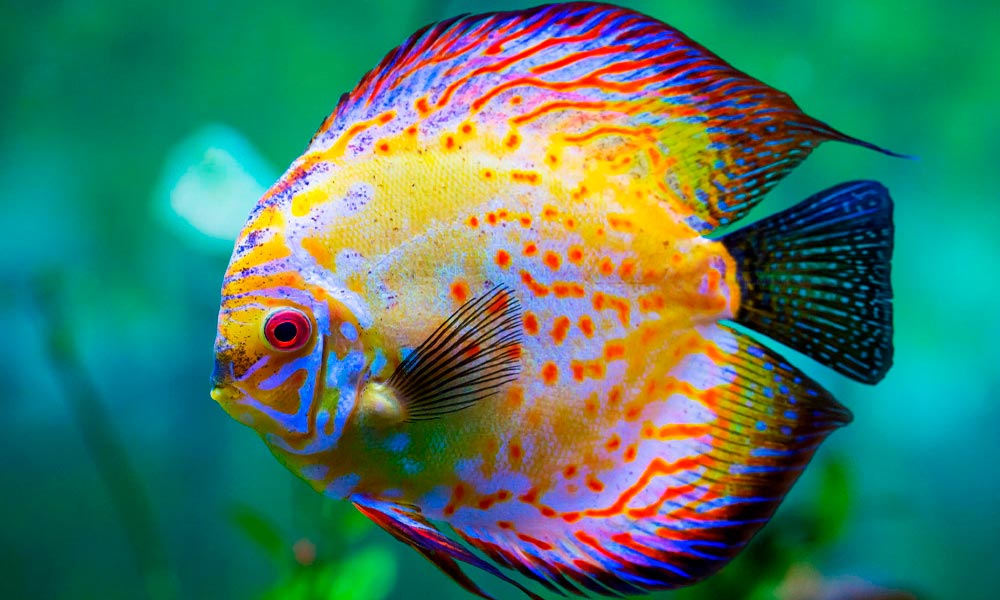
Source: La Cuadra Universitaria
Golden fish
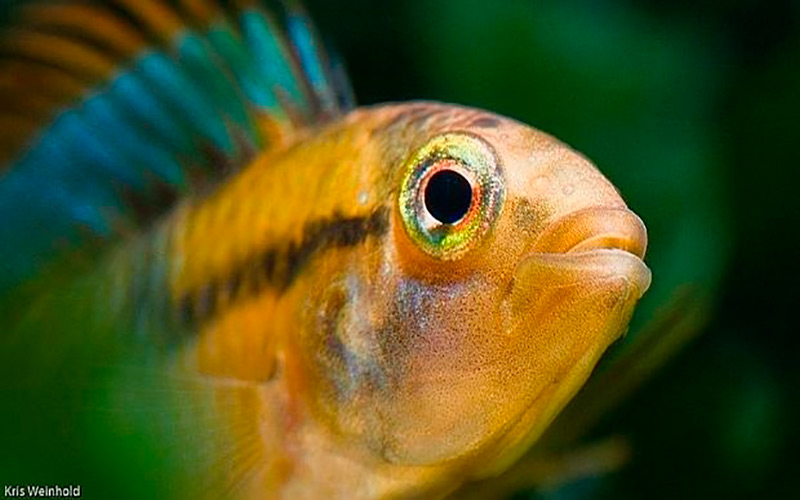
Source: ABC.es
Red Piranha
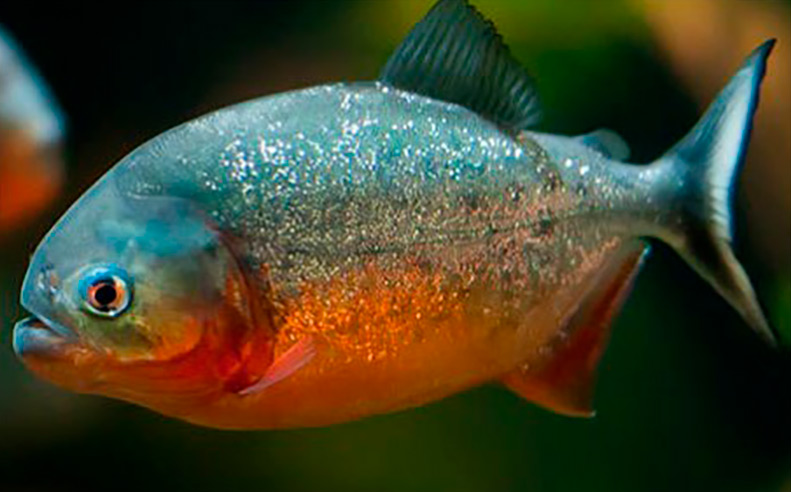
Source: Mundo-animal.com
Piranha
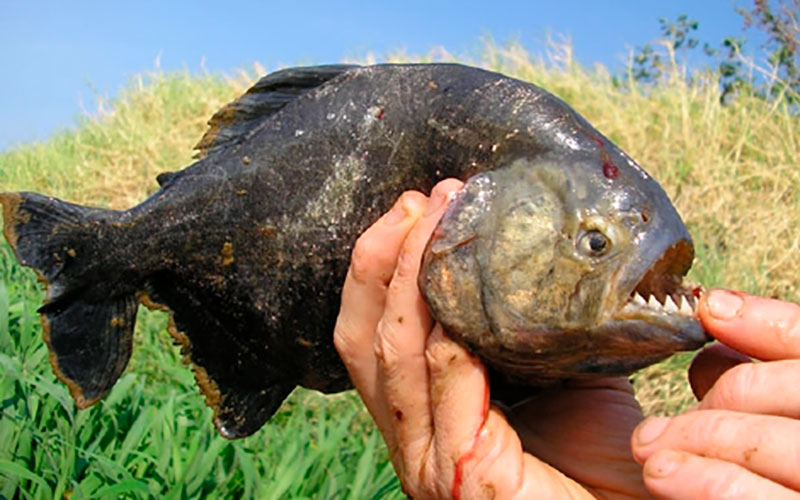
Source: Ucallaly
Piranha
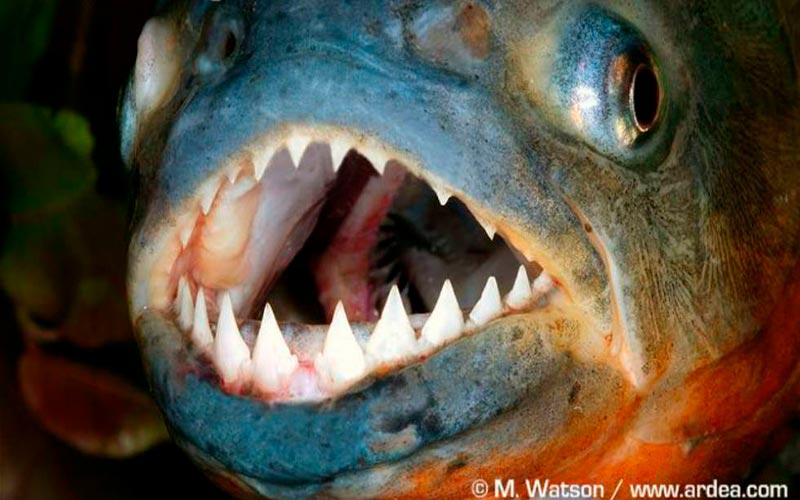
Source: M. Watson / www.ardea
Piranha
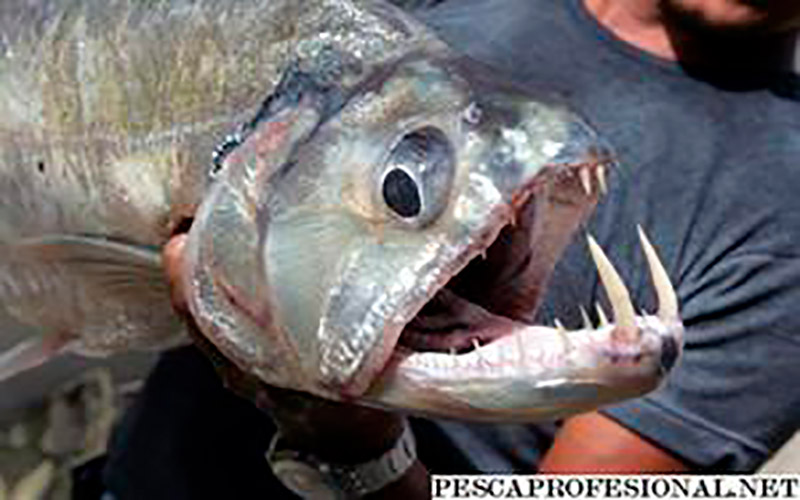
Source: ishindex.blogspot.com
Insects of Amazon
Amazonian ant
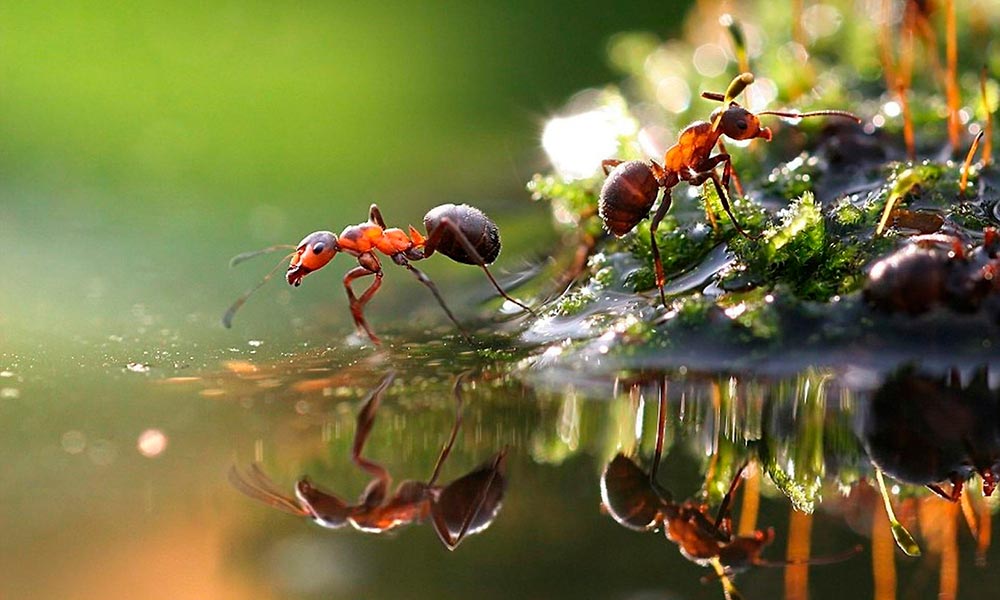
Source: Wallpaper Abyss – Alpha Coders
Goliath Tarantula

Source: CABROWORLD
Butterfly brand Peru

Source: Youtube
Cicada
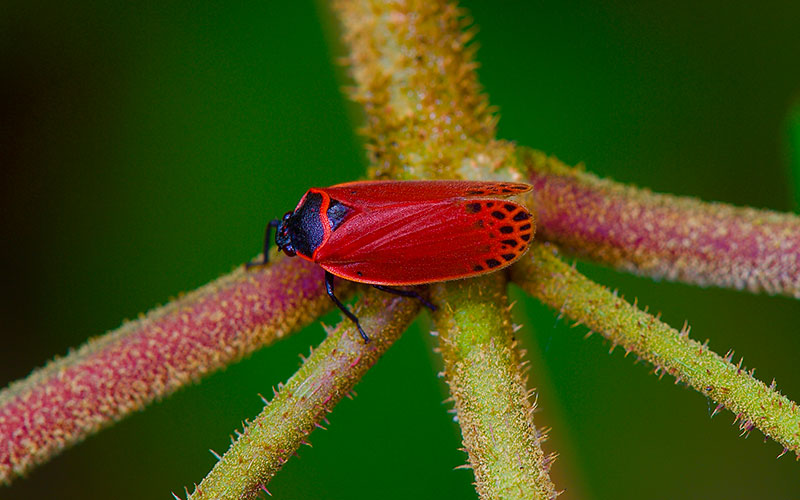
Source: Fotocommunity
Centipede
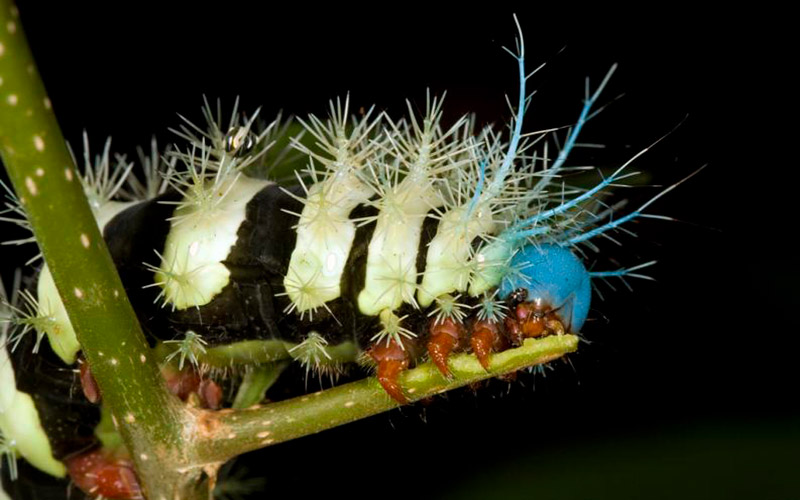
Source: VIX
Titan beetle
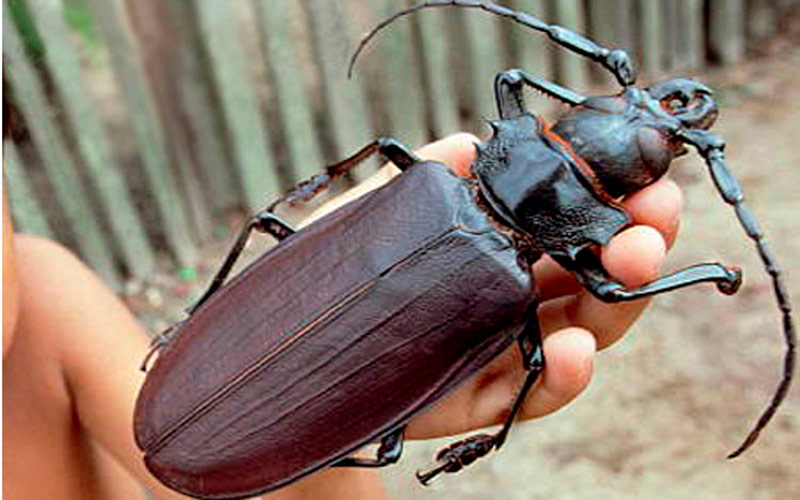
Source: CABROWORLD
The orchids of Amazon

Source: ilvettore.it
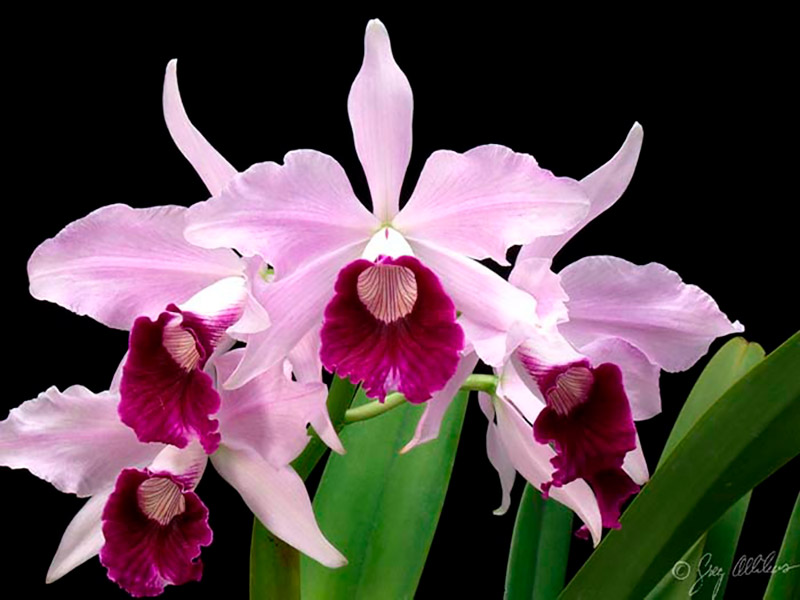
Source: Pinterest
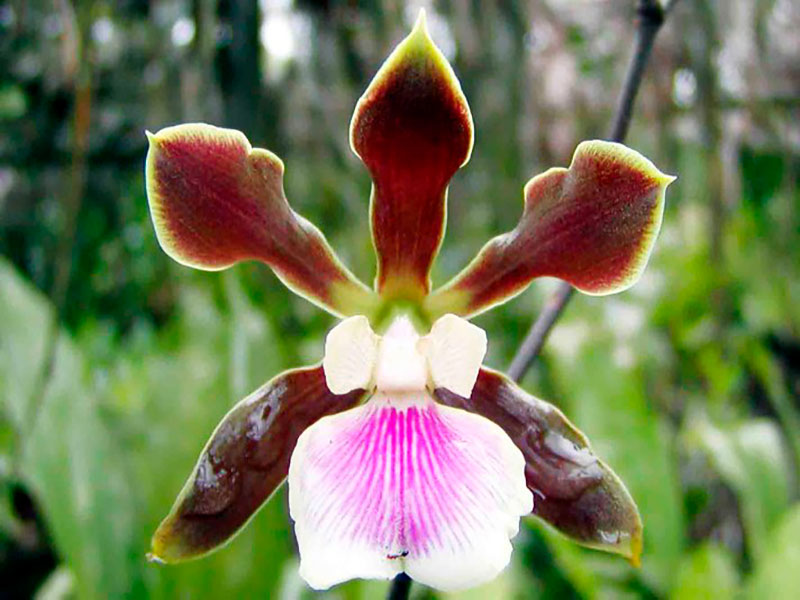
Source: Shiringero.blogspot.com
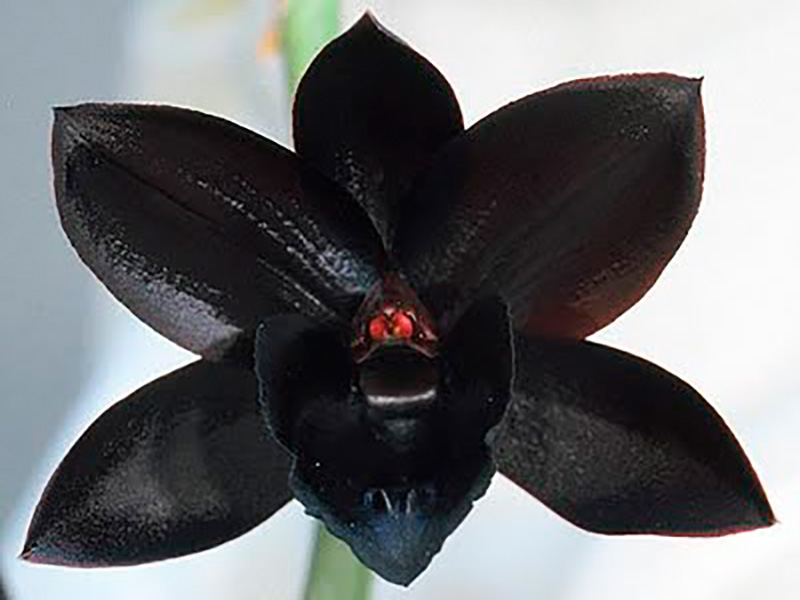
Source: Pinterest

Source: Gabitos
